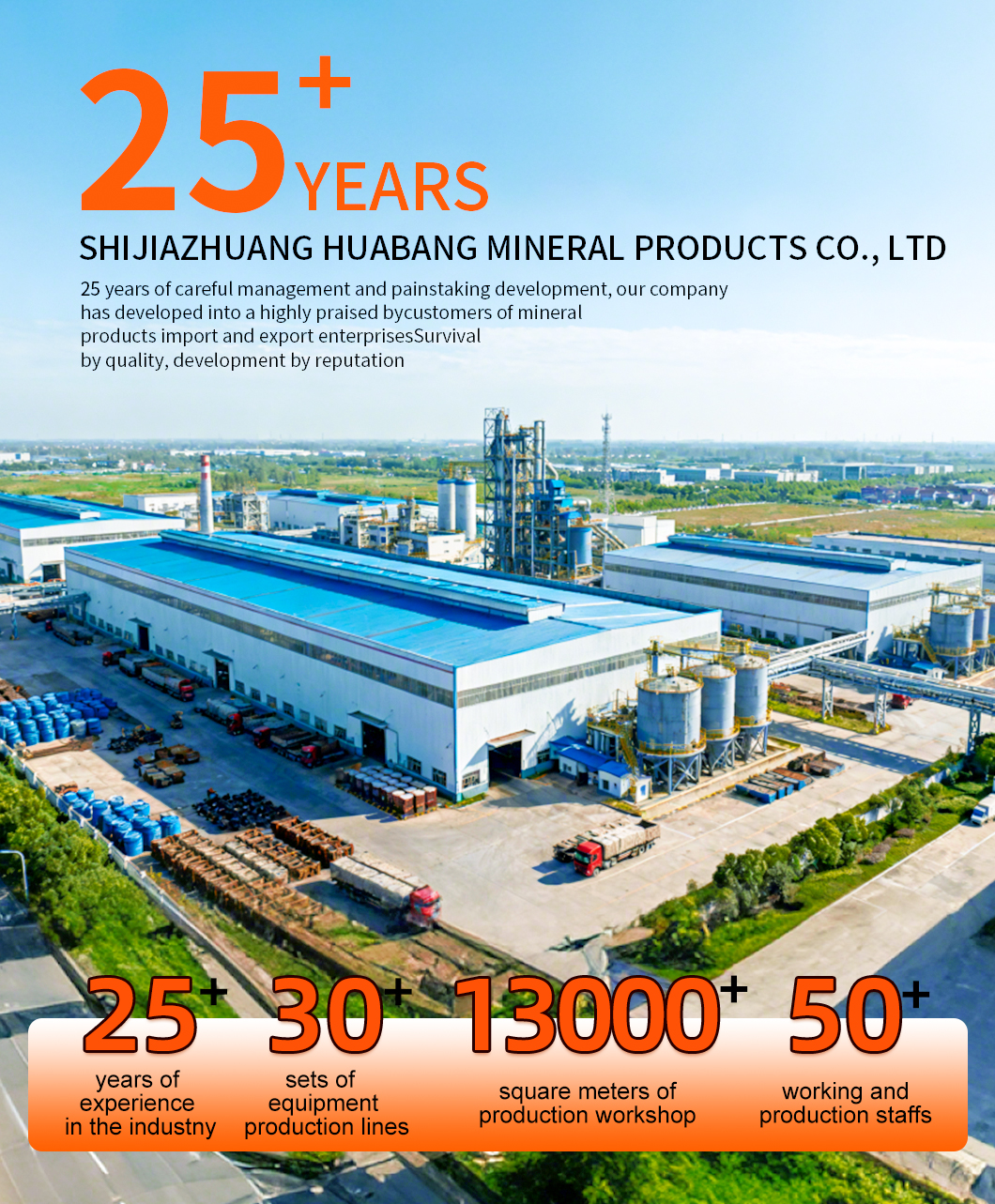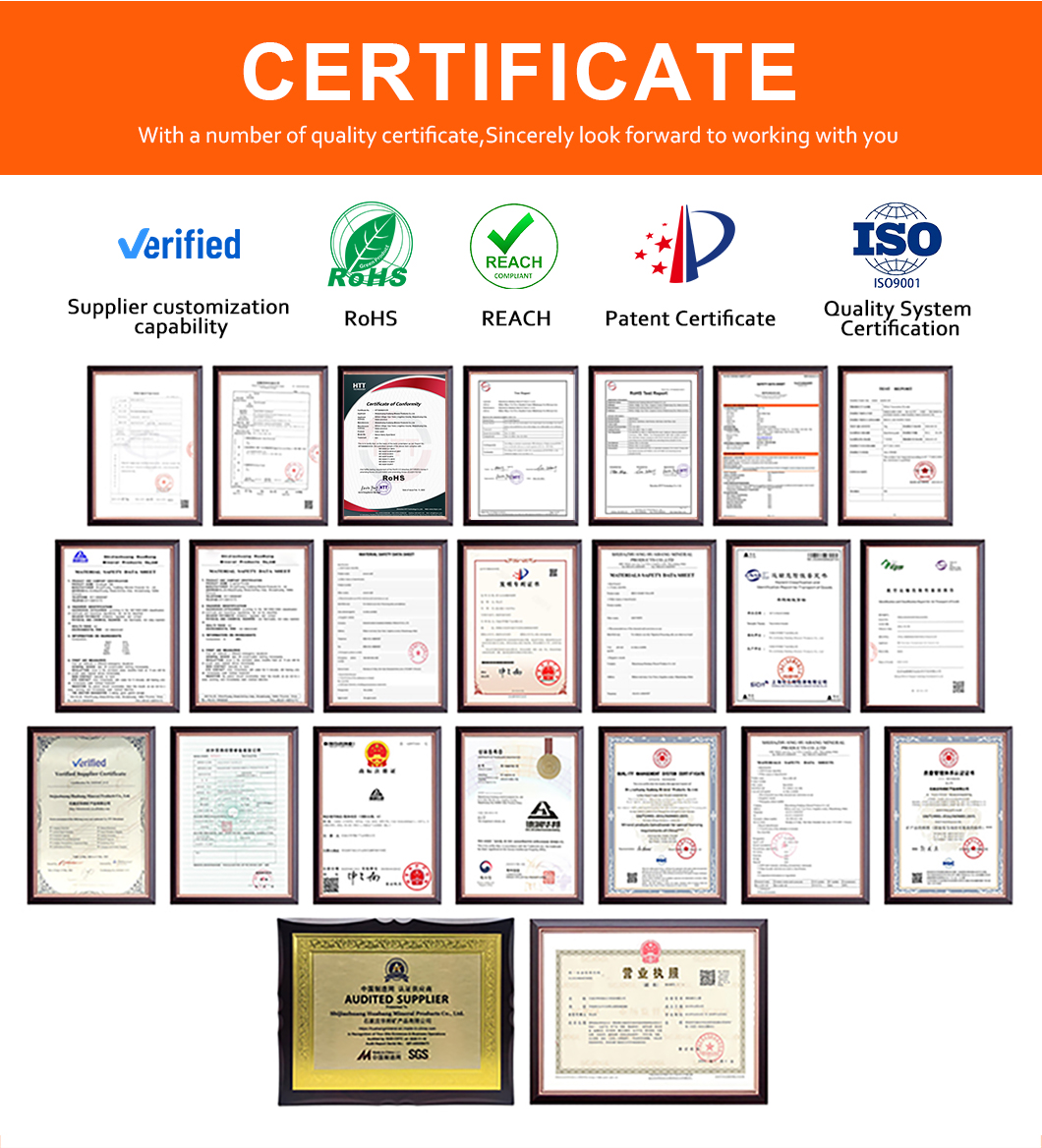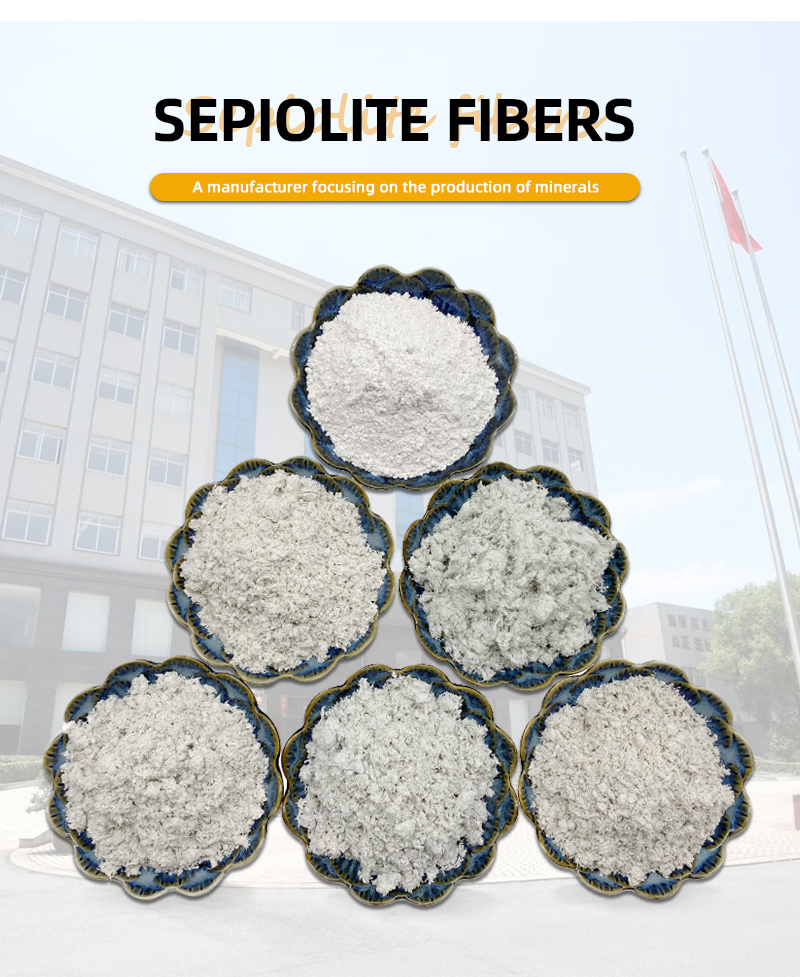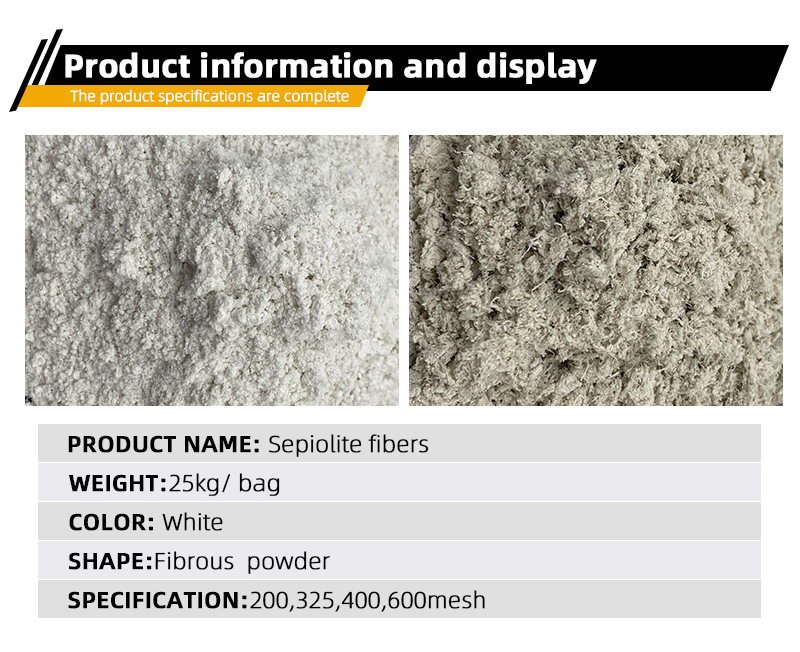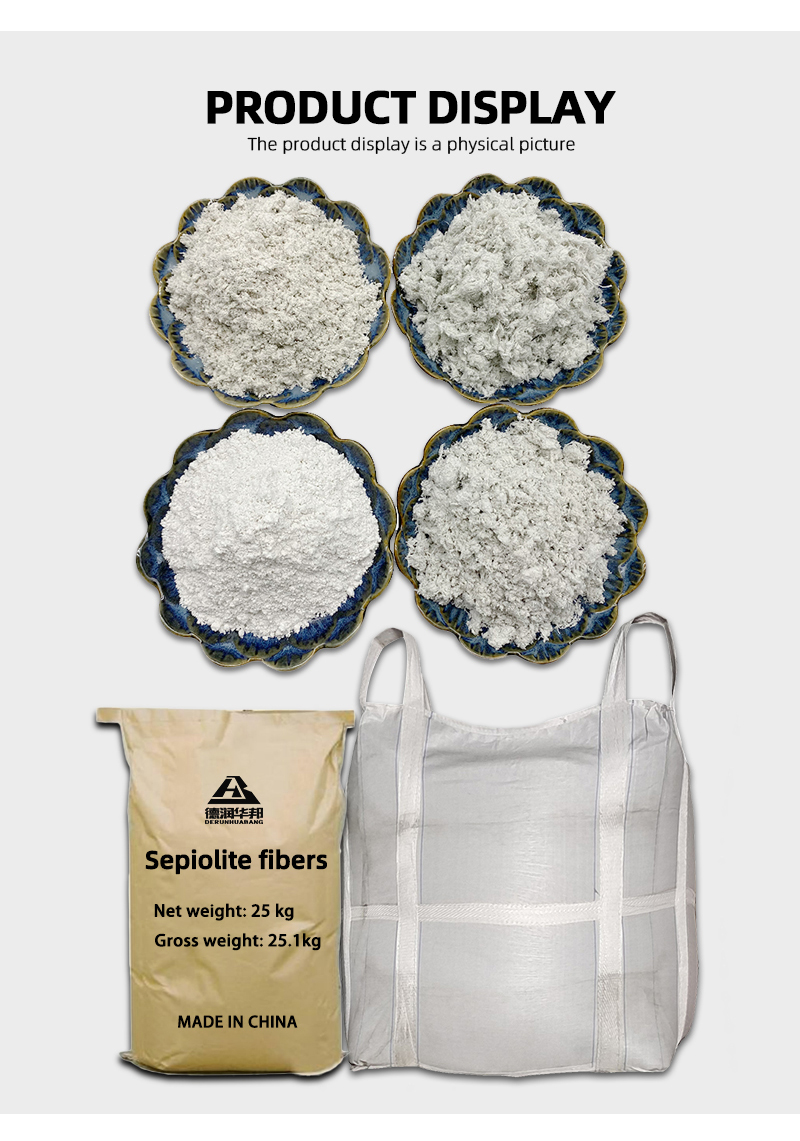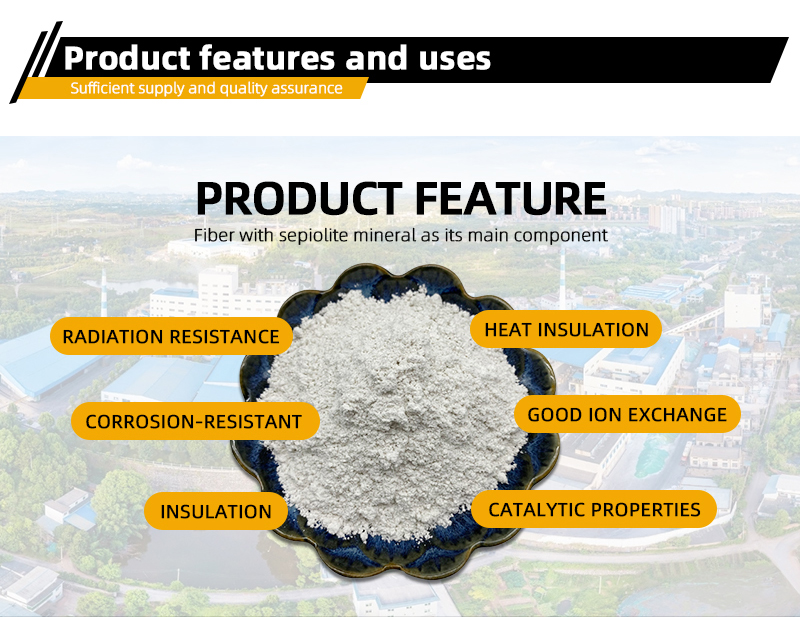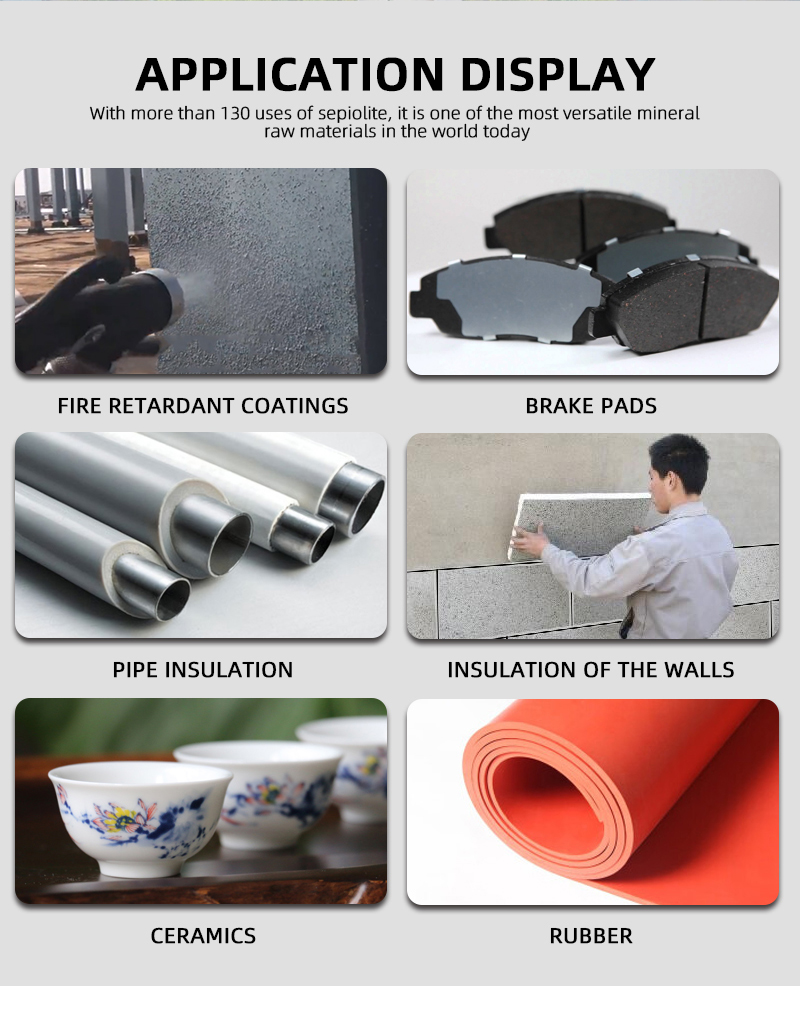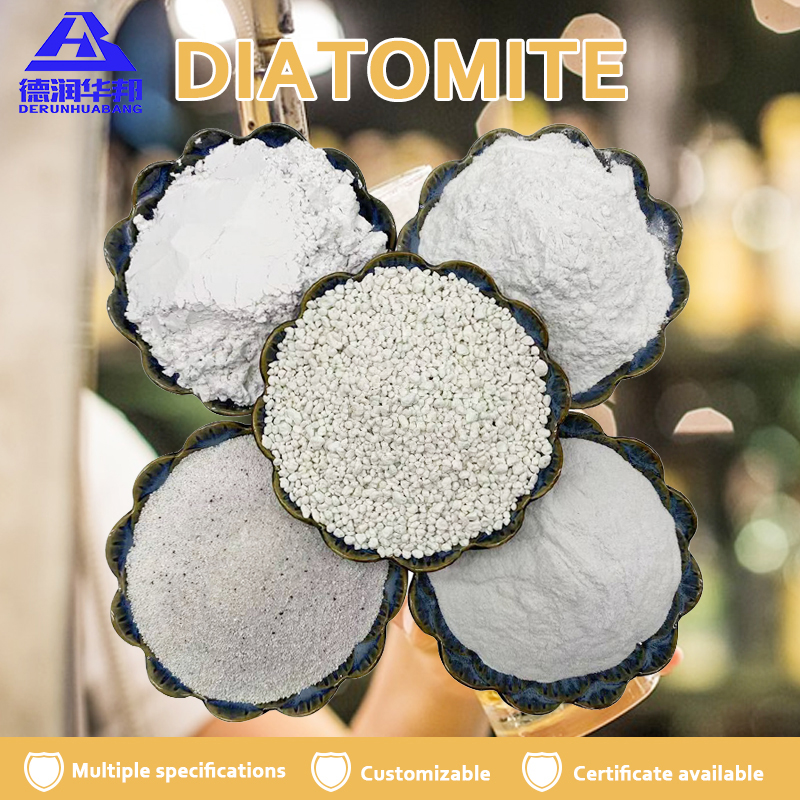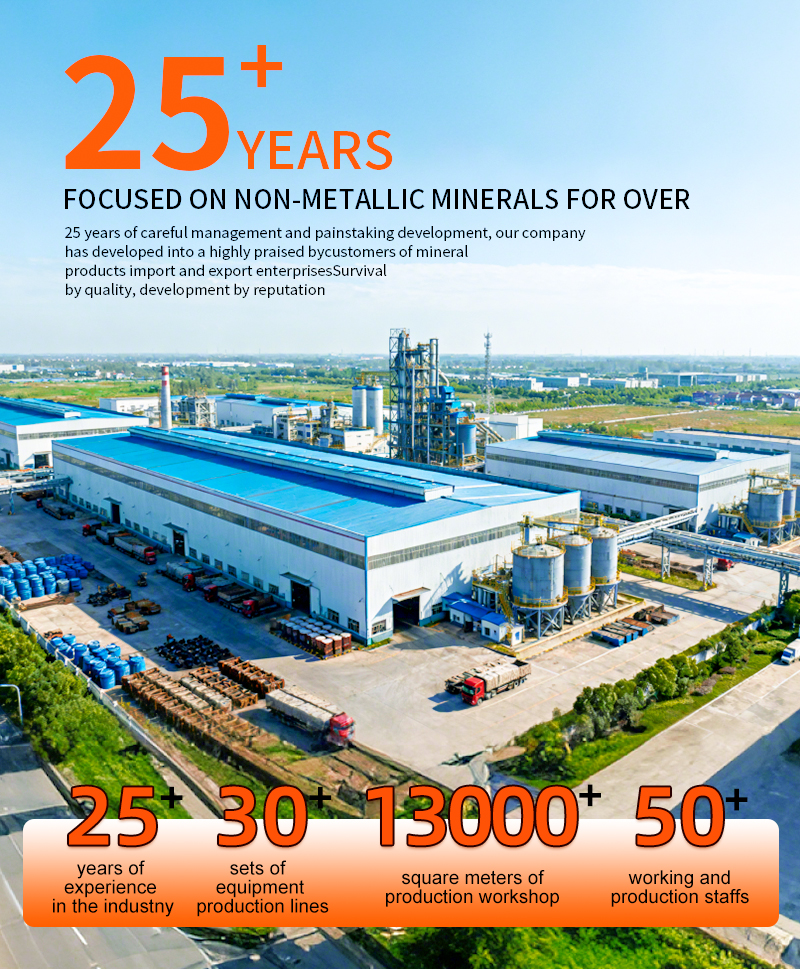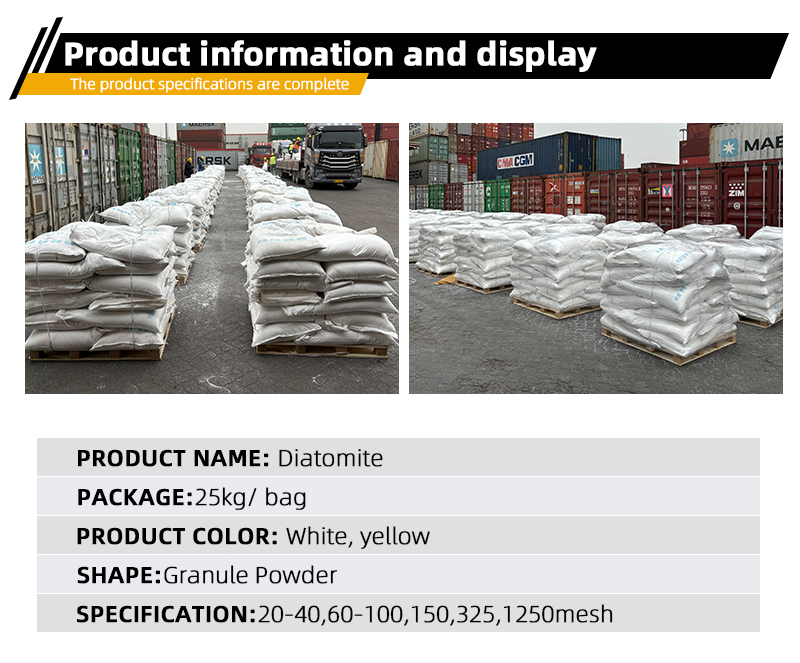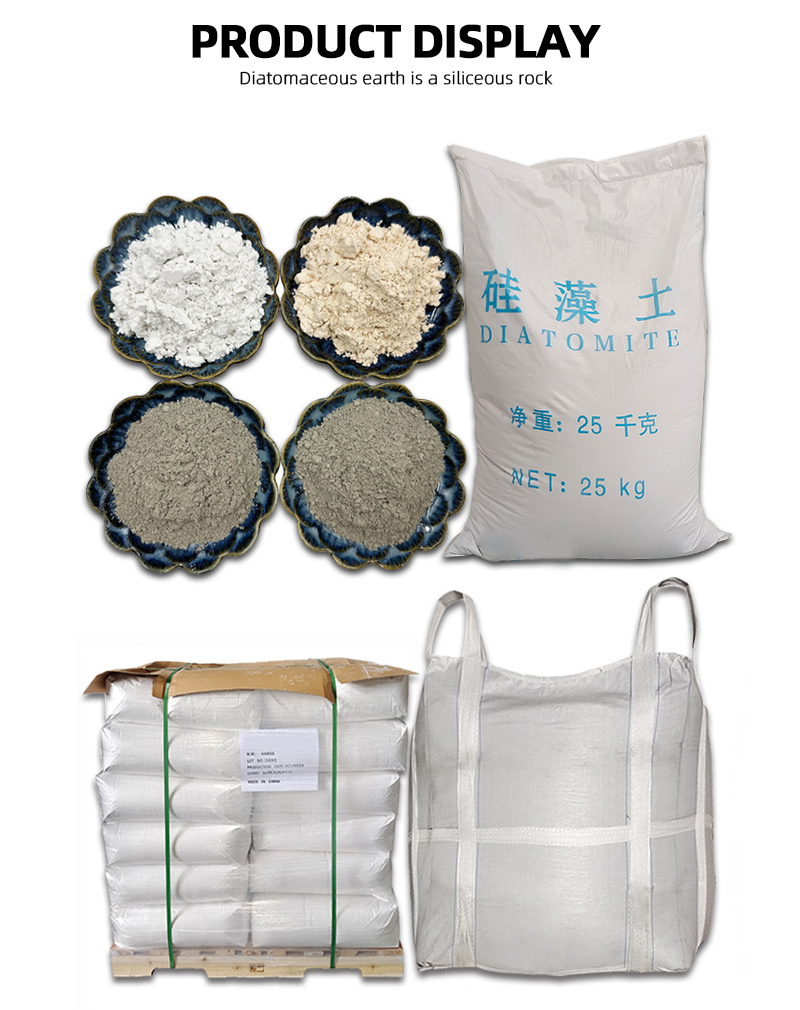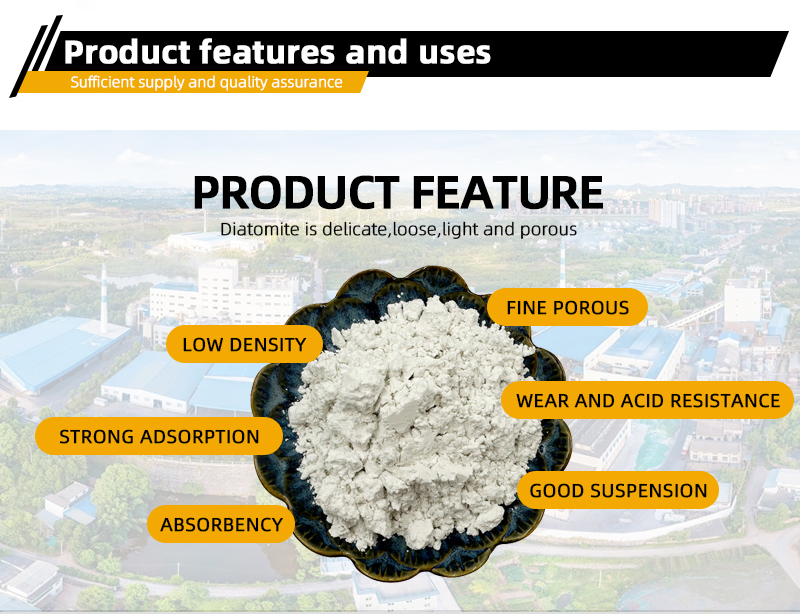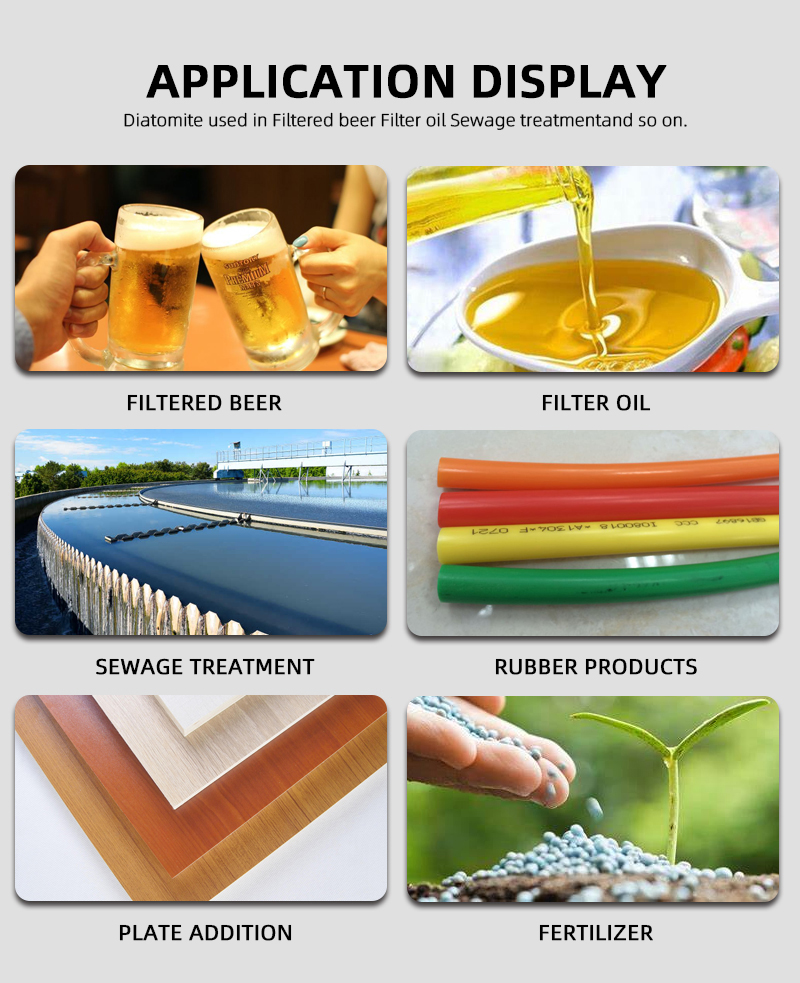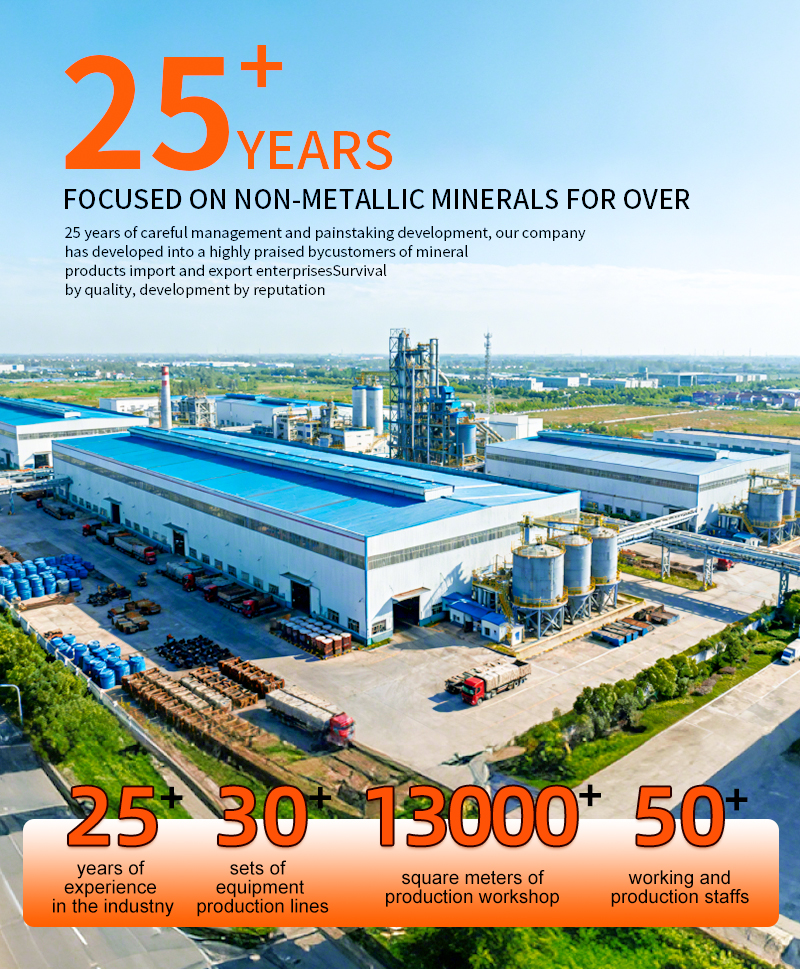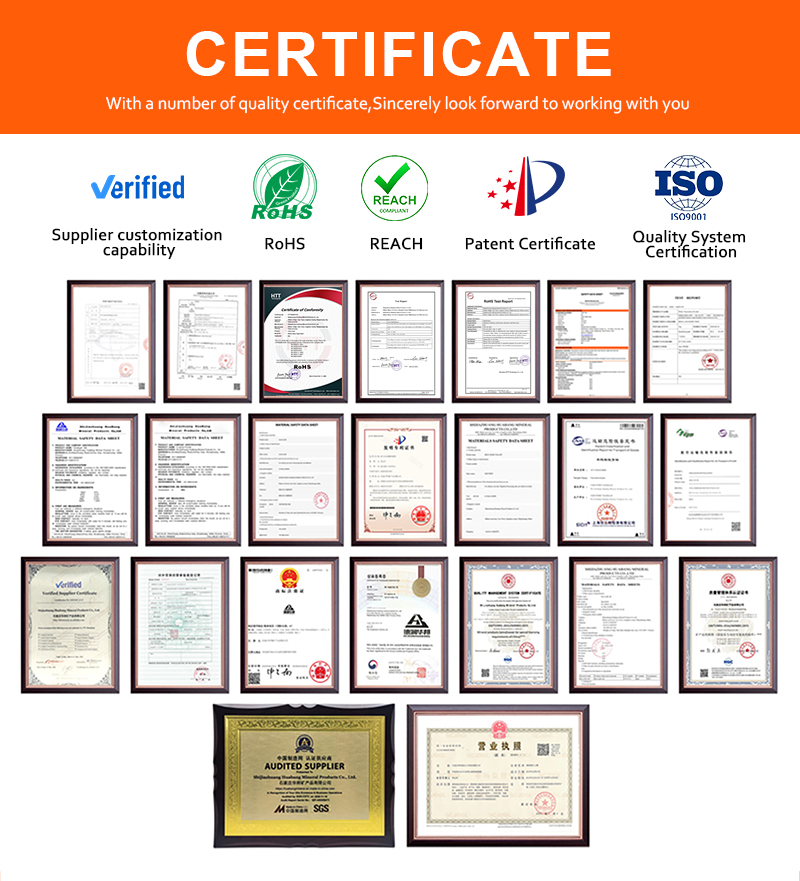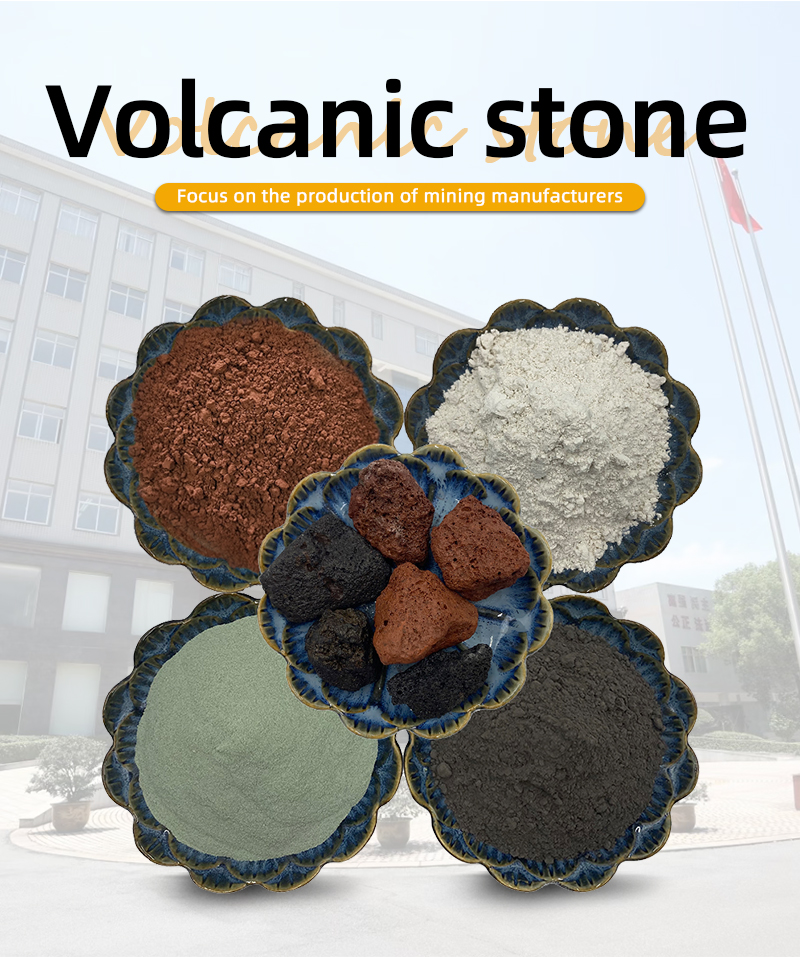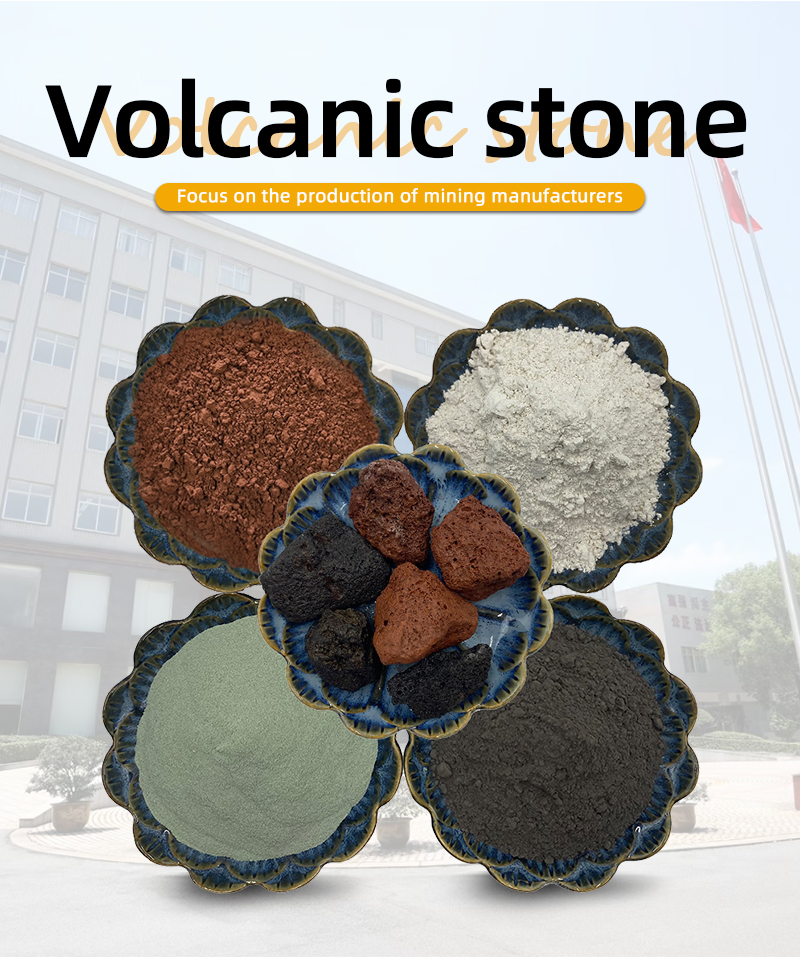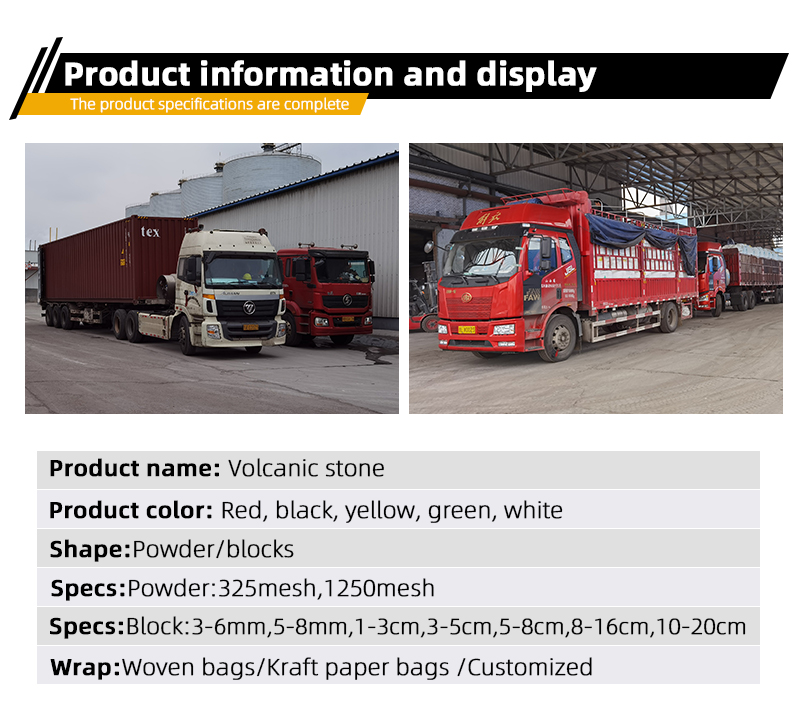-

Natural and artificial black rubber granules core materials for road construction and artificial grass applications
Black rubber granules are tiny, spherical particles made from recycled rubber materials, usually sourced from discarded automobile tires. These granules are a versatile and eco-friendly product that offers numerous benefits and applications.
One of the primary uses of black rubber granules is in the construction of artificial turf fields. These fields, often used in sports such as soccer, football, and hockey, require a stable and shock-absorbent base layer. Black rubber granules provide the perfect solution, as they enhance the cushioning properties of the turf and reduce the risk of injuries to athletes. The black color of the granules also helps to absorb heat, which can improve the melting point of the turf and extend its lifespan.
In addition to sports fields, black rubber granules are also used in playground surfacing, landscape mulching, and road construction. In playgrounds, they offer a safe and durable surface that can withstand heavy foot traffic and provide excellent shock absorption. As landscape mulch, they help to retain soil moisture, suppress weed growth, and add a decorative touch to garden beds. In road construction, black rubber granules can be mixed with asphalt to create a quieter and more durable road surface.
-

Exploring the diverse applications and environmental benefits of recycled black rubber granules
Black rubber granules are tiny, spherical particles made from recycled rubber materials, usually sourced from discarded automobile tires. These granules are a versatile and eco-friendly product that offers numerous benefits and applications.
One of the primary uses of black rubber granules is in the construction of artificial turf fields. These fields, often used in sports such as soccer, football, and hockey, require a stable and shock-absorbent base layer. Black rubber granules provide the perfect solution, as they enhance the cushioning properties of the turf and reduce the risk of injuries to athletes. The black color of the granules also helps to absorb heat, which can improve the melting point of the turf and extend its lifespan.
In addition to sports fields, black rubber granules are also used in playground surfacing, landscape mulching, and road construction. In playgrounds, they offer a safe and durable surface that can withstand heavy foot traffic and provide excellent shock absorption. As landscape mulch, they help to retain soil moisture, suppress weed growth, and add a decorative touch to garden beds. In road construction, black rubber granules can be mixed with asphalt to create a quieter and more durable road surface.
-

Sepiolite Fiber Delivers Excellent Adsorption Capacity Filtration Performance and Structural Enhancement for Industrial Wastewater Treatment Building Materials and Air Purification Applications
Sepiolite fiber is a natural magnesium silicate mineral with distinctive layered chain structure. This structure forms numerous interconnected micro pores and channels, which give sepiolite fiber remarkable physical and chemical properties. Unlike many synthetic materials, sepiolite fiber exists naturally in earth, mainly found in clay deposits, and requires only purification and appropriate processing to unlock its multiple functions. Its appearance presents as slender needle like bundles that can disperse into individual fibers in polar solvents, forming interwoven networks that enhance performance of various products.Core advantage of sepiolite fiber lies in its outstanding adsorption capacity, derived from high specific surface area and abundant active hydroxyl groups on fiber surface. These hydroxyl groups can form hydrogen bonds with different substances, while multi level pore structure—including tiny internal channels and larger inter fiber pores—enables selective capture of impurities. In industrial wastewater treatment, this adsorption capacity becomes particularly valuable. Sepiolite fiber can target heavy metal ions, organic dyes, phenols and oil substances in wastewater, trapping them within its pore structure through physical adsorption and chemical complexation.Application in industrial wastewater treatment demonstrates practical value of sepiolite fiber. When added to reaction tanks or used as filter media in columns, it effectively reduces pollutant concentrations. Modified sepiolite fiber, treated with acids to expand pore size and remove impurities, shows even stronger adsorption performance. After adsorption saturation, sepiolite fiber can be regenerated through simple methods such as elution with salt solutions or heating, allowing repeated use and reducing waste. This regenerability makes it cost effective option for long term wastewater treatment operations, especially for small and medium sized factories.Building materials sector is another key area where sepiolite fiber excels, primarily through structural enhancement and performance optimization. When mixed into cement mortar or gypsum products, slender fibers of sepiolite form three dimensional supporting networks within matrix. These networks block formation and expansion of micro cracks, significantly improving mechanical strength—including compressive and flexural strength—of building materials. For cement mortar, adding appropriate amount of sepiolite fiber can increase flexural strength by over twenty five percent. Additionally, sepiolite fiber regulates moisture in building materials; it absorbs excess moisture in humid environments and releases it in dry conditions, reducing deformation caused by humidity fluctuations.In coatings and insulation materials, sepiolite fiber provides multiple benefits. In water based architectural coatings, its fiber structure creates thixotropic networks that prevent sagging during application while maintaining smoothness during brushing. This structure also prevents settling of pigments and fillers, extending storage stability of coatings. For insulation mortar, porous nature of sepiolite fiber reduces thermal conductivity, enhancing heat preservation effect, while its fiber skeleton prevents powdering of insulation layers, balancing insulation performance and mechanical strength. Fire retardant coatings also benefit from sepiolite fiber’s high temperature resistance, extending fire resistance time of coatings.Air purification represents another important application field for sepiolite fiber. Its adsorption capacity effectively captures harmful gases and particulate matter in air. When made into filter nets or combined with other materials in purification products, it removes volatile organic compounds and formaldehyde from indoor air. Sepiolite fiber also acts as catalyst carrier; loading metal oxides or photocatalysts onto its surface enables catalytic conversion of harmful substances into harmless ones. This combination of adsorption and catalysis makes sepiolite fiber based materials more thorough in air purification, avoiding secondary pollution issues associated with some adsorbents.Versatility of sepiolite fiber stems from synergy between its natural structure and adjustable properties. Its compatibility with other materials allows compounding with resins, clays and catalysts to create customized products for specific needs. Whether in environmental protection, construction or air treatment, sepiolite fiber plays role of functional enhancer, adsorbent or structural stabilizer. As research on modification technologies advances, potential applications of sepiolite fiber continue to expand, from high temperature sealing materials to new energy related fillers. This natural mineral fiber, with its inherent performance advantages and environmental friendliness, remains valuable resource across multiple industrial sectors. -

Diatomaceous earth powder filtration coatings adsorbents construction materials rubber plastics paper manufacturing ceramics water treatment paints asphalt roofing insulation sectors
Diatomaceous Earth Powder originates from fossilized remains of tiny aquatic organisms known as diatoms. These microscopic organisms, after dying, sink to the bottom of water bodies and accumulate over millions of years, forming sedimentary deposits. These fossil deposits then undergo a series of careful processing steps—including mining, crushing, drying, and grading—to be transformed into fine, uniform powder with a range of unique traits. Among these traits, the most prominent one is its highly porous structure, which is formed by the intricate silica shells of the ancient diatoms. This porous structure results in an exceptionally large surface area relative to its volume, a feature that sets it apart from many other industrial powders. This special structure endows the powder with strong adsorption ability, efficient filtration performance, and stable chemical properties that resist reactions with most common industrial substances. Such a combination of traits makes it an essential material across numerous industrial sectors, as it can seamlessly fit into different production workflows without requiring complex adjustments or specialized equipment to utilize.In the filtration sector, diatomaceous earth powder plays an irreplaceable role due to its unique porous makeup. Its microscopic pores act like a natural, highly efficient sieve, capable of trapping tiny suspended particles—some as small as a few micrometers—that ordinary filter media, such as cloth or paper filters, might easily miss. A key application here is in water treatment processes: whether dealing with industrial wastewater from manufacturing plants or raw water sources used in production, adding diatomaceous earth powder to the water causes it to bind with impurities like fine sediment, organic residues, and even small chemical contaminants. As the mixture settles or passes through a filter, the powder traps these impurities, leaving behind clarified water that meets strict industrial use standards. Many factories, from textile mills to chemical plants, rely on this powder for treating their process water, ensuring that the water used in production lines is free from particles that could clog machinery, scratch product surfaces, or interfere with chemical reactions in manufacturing. Beyond water, it also excels in filtering industrial liquids like lubricating oils, hydraulic fluids, and chemical solutions. By removing tiny solid contaminants from these liquids, it not only improves the purity of the final products but also extends the lifespan of the equipment that uses these fluids.The coatings sector benefits greatly from the unique properties of diatomaceous earth powder, making it a popular additive in both industrial and decorative paints. When mixed into paint formulations, its porous nature enhances several key performance metrics: it boosts the hiding power of the coating, meaning fewer coats are needed to achieve full coverage over surfaces. It also improves wear resistance, making painted surfaces more durable against scratches, abrasion, and daily use—an important feature for high-traffic areas or industrial equipment coatings. Additionally, the powder adjusts the bonding force between the coating and the base surface, whether that surface is metal, wood, or concrete, reducing the chances of peeling, cracking, or flaking over time. The porous structure further speeds up the drying time of the coatings by allowing moisture and solvents to evaporate more quickly, which shortens production cycles for manufacturers who apply coatings to large batches of products. For decorative coatings, such as those used in interior design, the powder creates a desirable matte finish by scattering light through its porous structure, avoiding the harsh glare of glossy paints and meeting diverse aesthetic needs. Moreover, paint products infused with diatomaceous earth powder show better resistance to weathering, including UV radiation, rain, and temperature fluctuations, helping exterior painted surfaces maintain their appearance and protective performance for years in outdoor environments.As an adsorbent, diatomaceous earth powder excels in capturing a wide range of impurities, odors, and unwanted substances, making it valuable in various industrial settings. One key application is in waste gas treatment: factories that emit volatile organic compounds, fumes, or other harmful gases pass these emissions through filters filled with diatomaceous earth powder, which traps the harmful substances within its pores before the cleaned gas is released. This helps facilities meet emission standards and improve air quality in their surroundings. The powder also serves as an effective moisture absorber in storage facilities: when placed alongside materials like textiles, paper, or metal parts, it absorbs excess moisture from the air, preventing mold growth, mildew, and corrosion that can degrade products. In oil processing plants, it is used to adsorb excess oil from the surfaces of parts, machinery, or finished products, ensuring cleanliness and preventing oil-related contamination. What makes it particularly reliable is that its adsorption ability remains stable under a wide range of temperature and humidity conditions—from the high heat of industrial ovens to the dampness of storage warehouses—making it a consistent choice for long-term use without losing effectiveness. Unlike some synthetic adsorbents, it also retains its structure even when fully saturated, making it easy to handle and dispose of or regenerate for repeated use in some cases.The construction materials sector values diatomaceous earth powder primarily for its excellent thermal insulation and soundproofing capabilities, as well as its ability to enhance durability. When mixed into wall materials like plaster, drywall, or specialized insulation boards, its porous structure acts as a barrier to heat conduction: in winter, it traps warm air inside buildings, reducing heat loss; in summer, it blocks hot air from entering, helping maintain stable indoor temperatures without over-reliance on heating or cooling systems. Beyond insulation, the powder also absorbs sound waves by dissipating their energy within its pores, lowering noise transmission between rooms or from outdoor environments—making it ideal for use in residential buildings, offices, and industrial workshops where noise control is important. In asphalt road construction, adding diatomaceous earth powder to the asphalt mixture brings multiple benefits: it improves the overall durability of the road surface, enhances wear resistance against heavy traffic, and boosts skid resistance, which is crucial for safety in wet or icy conditions. It also reduces common road issues like oil bleeding (where asphalt binder rises to the surface) and rutting (deep grooves caused by repeated vehicle pressure), extending the service life of roads by several years and significantly cutting down on costly maintenance and repaving work. For roofing materials, such as asphalt shingles or waterproof membranes, the powder adds an extra layer of waterproof performance by filling tiny gaps in the material and creating a dense, water-resistant barrier, protecting buildings from leaks, water damage, and rot in roof structures.The rubber and plastics sectors widely use diatomaceous earth powder as a cost-effective filler and performance reinforcer, as it improves product quality without adding excessive weight or cost. In rubber production—for items like tires, seals, hoses, and gaskets—the powder increases the hardness and toughness of the rubber while enhancing its wear resistance, a critical factor for products that endure constant friction or pressure. Its small particle size (often measured in micrometers) and large surface area allow it to bond tightly with the rubber matrix, enhancing adhesion between the powder and rubber and boosting the material’s tensile strength, which prevents tearing or stretching under stress. It also acts as an anti-settling agent during the mixing process, ensuring that other additives (like colorants or antioxidants) remain evenly distributed throughout the rubber, avoiding inconsistencies in performance or appearance. For plastics—used in products ranging from pipes and fittings to packaging materials and automotive components—the powder improves impact resistance, making plastic less likely to crack when dropped or hit. It also enhances tear resistance and aging resistance, protecting plastic products from becoming brittle over time due to exposure to sunlight or temperature changes. Plastic pipes infused with diatomaceous earth powder, for example, show better resistance to pressure and chemical corrosion, while packaging materials become more durable and less prone to tearing during shipping and handling.The paper manufacturing and ceramics sectors also rely heavily on diatomaceous earth powder for its ability to improve product performance and streamline production processes. In paper manufacturing—for products like printing paper, packaging paper, and specialty papers (such as those used in filters or medical packaging, excluding medical applications themselves)—the powder acts as a coating or filler that enhances key properties. It improves the opacity of the paper, ensuring that ink does not bleed through from one side to the other, and boosts smoothness, which results in sharper, clearer print quality for books, magazines, and marketing materials. It also reduces paper shrinkage caused by changes in humidity, a common issue that can warp paper or cause printed materials to curl, ensuring dimensional stability even in damp or dry environments. For packaging paper, the powder adds a layer of stiffness and tear resistance, making boxes and bags more durable for shipping heavy items. In ceramics manufacturing—for products like floor tiles, wall tiles, industrial ceramics (such as those used in kiln linings or high-temperature containers), and decorative ceramics—the powder plays a key role in reducing production costs and improving performance. It lowers the sintering temperature required to harden ceramic materials, which saves energy and reduces wear on kilns. It also improves the porosity of ceramic products, making them lighter without sacrificing strength, and enhances their thermal stability, allowing them to withstand extreme temperatures without cracking or breaking. Industrial ceramics made with diatomaceous earth powder, for example, maintain their structural integrity in high-heat environments like furnaces or foundries, while floor tiles become more resistant to scratches and stains due to the powder’s reinforcing effect.In summary, diatomaceous earth powder stands out as an exceptionally versatile industrial material whose value stems from its natural porous structure and stable, multi-functional properties. These characteristics enable it to serve a wide range of critical roles across key sectors: from purifying liquids in filtration and treating emissions in adsorption to enhancing durability in coatings, construction materials, rubber, plastics, paper, and ceramics. In every application, it delivers tangible benefits: it enhances product performance by boosting strength, resistance, and consistency; shortens production cycles by speeding up processes like drying or sintering; reduces costs by acting as a cost-effective filler or reducing maintenance needs; and improves reliability by maintaining its properties under diverse industrial conditions. For manufacturers across these sectors, whether they produce small components or large-scale infrastructure materials, diatomaceous earth powder provides practical, easy-to-implement solutions that meet diverse production needs—no specialized training or equipment is required to integrate it into existing workflows. Incorporating it into production processes helps optimize operations by reducing waste, improving efficiency, and delivering products that meet higher quality standards, which in turn helps businesses stand out in competitive markets. Its wide range of applications, consistent performance, and natural origins make it a valuable, long-term asset in industrial production, with uses that continue to expand as manufacturers discover new ways to leverage its unique traits. -

Tourmaline powder for architectural materials ceramic glaze modification plastic reinforcement decorative stone enhancement thermal stability wear resistance surface coating
Tourmaline Powder emerges as versatile mineral material that bridges Sustainable Living and Circular Economy, adapting innovatively to diverse demands of Architectural Materials, Ceramic Glaze Modification, and Plastic Reinforcement. Unlike single-function mineral additives prone to performance gaps, Tourmaline Powder exhibits unique combination of physical traits—thermal stability, hardness, and dispersion ability—that enhance functionality of end products across industries. Derived from natural tourmaline ore deposits with varied mineral compositions (pink, green, black, colorless), Tourmaline Powder undergoes physical processing without toxic chemicals, aligning with modern trends focused on durability and resource efficiency. Serving as core component in Decorative Stone Enhancement and Surface Coating, Tourmaline Powder transcends single-role limits to become multi-purpose solution blending structural reinforcement, aesthetic optimization, and long-term durability.Resource foundation of Tourmaline Powder combines natural abundance and regional diversity, with ore traits tailored to specific application needs. Natural tourmaline ore exists in distinct geological formations worldwide, each yielding powder with unique properties: Brazilian pink tourmaline deposits produce powder with ultra-fine particle size and high thermal stability, ideal for Ceramic Glaze Modification requiring uniform dispersion; African green tourmaline ore yields powder with strong surface adhesion, perfect for Plastic Reinforcement needing tight bonding with polymer matrices; Sri Lankan black tourmaline deposits offer high-hardness powder suited for Decorative Stone Enhancement demanding wear resistance. Mining of tourmaline ore adheres to selective extraction methods—surface mining is prioritized to avoid deep geological disturbance, and ore sorting relies on physical screening (not chemical leaching) to separate tourmaline crystals from associated minerals like quartz and feldspar, preserving mineral integrity.Processing of Tourmaline Powder focuses on preserving inherent traits and optimizing compatibility with target applications. Ore processing begins with coarse crushing using low-energy jaw crushers to prevent particle damage, followed by fine grinding via airflow mills operating at moderate temperatures—this method retains tourmaline’s crystal structure, which is critical for thermal stability and hardness. Multi-stage air classification separates powder into precise particle size grades: ultra-fine powder (for Ceramic Glaze Modification, ensuring no visible particles in glazes); medium-grade powder (for Surface Coating, enabling smooth application); and coarse powder (for Plastic Reinforcement, providing structural support). No toxic chemicals or solvents are used throughout processing, maintaining non-toxic nature suitable for consumer and industrial products.Key processing step involves surface activation tailored to end uses: Tourmaline Powder for Plastic Reinforcement is treated with natural silicate compounds to enhance adhesion to polymer resins; powder for Ceramic Glaze Modification undergoes low-temperature calcination to reduce moisture content (preventing glaze bubbling); powder for Decorative Stone Enhancement is coated with plant-based waxes to improve dispersion in coating formulations. Waste generated during processing—mainly non-tourmaline mineral residues—is repurposed as aggregate in Architectural Materials (like concrete blocks), aligning with Circular Economy principles by minimizing landfill waste. Energy efficiency is prioritized via solar-powered drying systems and heat recovery from grinding processes, reducing overall carbon footprint.Core properties of Tourmaline Powder make it irreplaceable across target industries, with each trait directly addressing application challenges. Thermal stability allows Tourmaline Powder to retain structure at high temperatures—critical for Ceramic Glaze Modification, where it resists color shifting and glaze cracking during kiln firing. Hardness (exceeding that of many mineral additives) enhances wear resistance in Decorative Stone Enhancement, ensuring colored or coated stones maintain appearance in high-traffic areas. Dispersion ability enables uniform distribution in Plastic Reinforcement, preventing weak spots in polymer products. Surface reactivity promotes strong bonding with diverse substrates, from ceramic glazes to plastic resins, reducing risk of additive separation over time. Color neutrality of clear tourmaline powder preserves base hues in coatings and glazes, while colored variants (like green or pink) can add subtle tinting for custom aesthetics.Ceramic Glaze Modification stands as flagship application for Tourmaline Powder, where it solves common industry challenges. In residential tile production, ultra-fine pink tourmaline powder is added to transparent glazes to boost thermal shock resistance—tiles coated with these glazes withstand sudden temperature changes (like hot pots placed on kitchen tiles) without cracking. For decorative ceramic vases, green tourmaline powder is mixed into colored glazes to enhance color depth and gloss; its fine particle size eliminates streaking, creating smooth, uniform finishes. Industrial ceramic applications (like floor tiles for commercial spaces) use black tourmaline powder to reinforce glazes, doubling wear resistance compared to standard glazes and reducing replacement frequency.Plastic Reinforcement benefits significantly from Tourmaline Powder’s structural and functional traits. In outdoor plastic furniture, coarse black tourmaline powder is blended into polyethylene resins—this combination enhances UV resistance (preventing plastic fading) and increases impact strength, allowing furniture to withstand harsh weather and heavy use. For plastic packaging used in industrial parts, medium-grade tourmaline powder adds rigidity without sacrificing flexibility, reducing material usage while maintaining durability. Decorative plastic panels (used in interior design) integrate ultra-fine pink or green tourmaline powder to create subtle, marble-like textures; powder’s dispersion ability ensures consistent pattern across large panels, avoiding blotchiness common with other additives.Decorative Stone Enhancement leverages Tourmaline Powder’s aesthetic and protective properties. In natural marble renovation, medium-grade tourmaline powder is mixed into stone sealants to create protective Surface Coating—powder’s hardness forms barrier against scratches, while its transparency preserves marble’s natural veining. For artificial stone production, tourmaline powder is integrated into resin-stone mixtures: black tourmaline adds depth to granite-like artificial stones, while pink tourmaline creates rose-hued variants. These artificial stones require less maintenance than natural stone, as tourmaline’s weather resistance prevents color fading and surface degradation. In landscaping, tourmaline-powder coated river rocks retain vibrant colors for years, outperforming uncoated rocks that fade quickly in sunlight.Architectural Materials integrate Tourmaline Powder for both function and aesthetics. In concrete decorative blocks, coarse tourmaline powder is added to concrete mixtures to enhance strength and add subtle texture—blocks with tourmaline powder resist cracking better than standard concrete and hold paint longer. For drywall joint compounds, ultra-fine tourmaline powder improves workability and reduces shrinkage, ensuring smooth, long-lasting joints. Exterior stucco formulations use medium-grade tourmaline powder to boost weather resistance; stucco with tourmaline powder resists rain penetration and retains color, reducing repainting needs for residential and commercial buildings.Quality control of Tourmaline Powder is tailored to specific applications, ensuring consistent performance. For Ceramic Glaze Modification, tests include particle size analysis (via laser diffraction) to verify uniformity, thermal stability tests (exposing powder to firing temperatures to check structure retention), and glaze compatibility tests (mixing with glazes to ensure no bubbling or discoloration). For Plastic Reinforcement, tests measure tensile strength (verifying reinforcement effect), dispersion uniformity (inspecting plastic samples for additive clumps), and UV resistance (exposing samples to simulated sunlight to check color and strength retention).For Decorative Stone Enhancement, wear resistance tests use standardized abrasion machines to simulate foot traffic; adhesion tests measure bond strength between powder coatings and stone surfaces. For Architectural Materials, compression strength tests verify structural improvement, and weather resistance tests expose samples to rain, sunlight, and temperature cycles. All tourmaline powder batches undergo purity testing to ensure no harmful contaminants, and recycled powder waste (from production trimmings) undergoes magnetic separation to remove metal impurities before reuse in less demanding applications (like concrete aggregates).In conclusion, Tourmaline Powder stands as cornerstone mineral additive aligning with Sustainable Living and Circular Economy. Its natural origin, eco-friendly processing, and versatile properties—thermal stability, hardness, dispersion ability—drive unique value in Ceramic Glaze Modification, Plastic Reinforcement, Decorative Stone Enhancement, and Architectural Materials. Unlike synthetic additives that rely on toxic chemicals or have narrow application scopes, Tourmaline Powder enhances both functional and aesthetic traits of end products while minimizing environmental impact.Real-world applications demonstrate its adaptability: from durable ceramic tiles to weather-resistant plastic furniture, and from long-lasting decorative stone to strong architectural materials. As demand for multi-functional, long-lasting materials grows—fueled by consumer preference for low-maintenance products and industrial focus on waste reduction—Tourmaline Powder is poised to expand its market reach. Ongoing research into nano-sized Tourmaline Powder and advanced surface activation techniques promises even greater performance, such as enhanced transparency in glazes and improved reinforcement in biodegradable plastics. -

Iron oxide pigments for sustainable living circular economy green construction architectural coatings industrial coloring color stability weather resistance concrete staining interior decoration
Iron oxide pigments stand as versatile eco-friendly materials that link sustainable living and circular economy, adapting innovatively to diverse demands of green construction, architectural coatings, and interior decoration. Unlike synthetic pigments relying on toxic chemical synthesis or emitting harmful byproducts, iron oxide pigments originate from natural iron ore deposits or eco-friendly synthetic processes. This unique origin endows them with inherent color stability and exceptional weather resistance, traits that distinguish them from conventional coloring materials. Serving as core component in industrial coloring, concrete staining, and architectural finishes, iron oxide pigments transcend single-function roles to become multi-purpose solutions blending natural properties, functional performance, and environmental responsibility.Resource foundation of iron oxide pigments combines natural abundance and ecological harmony. Natural iron oxide pigments are extracted from iron ore deposits rich in hematite and goethite, distributed across diverse geological zones. Synthetic iron oxide pigments are produced via controlled chemical reactions using iron-rich byproducts from steel manufacturing, realizing waste reuse. Extraction and production adhere to strict eco-friendly standards: natural mining adopts surface extraction to avoid deep geological disturbance, and mined areas undergo vegetation restoration; synthetic processes use closed-loop systems to capture emissions and recycle wastewater. Circular economy is practiced in waste management: pigment residues from production are reused as iron supplements in construction materials, minimizing resource waste.Production processes of iron oxide pigments focus on preserving core properties and reducing environmental impact. Natural pigments undergo physical processing: ore crushing, grinding, and sieving to separate pigment particles from impurities, with no toxic chemicals used. Synthetic pigments use low-temperature chemical reactions to control particle size and color shade, avoiding high-energy consumption. Post-production treatment includes washing and drying with solar-powered systems to cut carbon footprint. For specialized applications like architectural coatings, pigments undergo surface modification to enhance dispersion in binders, ensuring uniform coloring without affecting environmental performance. These processes retain iron oxide pigments’ color stability while optimizing compatibility with diverse substrates.Core properties of iron oxide pigments make them irreplaceable across industries. Color stability ensures long-lasting hue retention: they resist fading caused by sunlight, rain, and temperature changes, maintaining consistent appearance in outdoor and indoor environments. Weather resistance allows use in harsh conditions: applied to exterior building surfaces, they withstand extreme heat, cold, and moisture without degradation. Chemical inertness ensures compatibility with concrete, coatings, and plastics, avoiding reactions that alter color or material performance. Non-toxic nature makes them suitable for interior spaces, as they release no volatile organic compounds. Wide color range—from red and yellow to black and brown—meets diverse coloring needs in construction and industrial sectors.Iron oxide pigments excel in diverse application scenarios. Green construction leverages their weather resistance and color stability: added to concrete, they stain pavements, wall panels, and landscape elements, eliminating need for decorative tiles and reducing material waste. Architectural coatings use them to color exterior and interior paints: exterior paints with iron oxide pigments retain color for years, reducing repainting frequency; interior paints offer warm, natural hues that complement modern and traditional design styles. Industrial coloring applies them to plastics and ceramics: mixed into plastic pipes and containers, they provide UV protection and color coding; added to ceramic tiles, they create earthy tones for floors and walls. Concrete staining is a key application: iron oxide pigments penetrate concrete surfaces, creating permanent color that resists peeling and wear, ideal for commercial plazas and residential driveways.Quality control of iron oxide pigments is tailored to specific applications. For architectural coatings, color fastness tests expose pigments to simulated sunlight and rain for extended periods to verify fading resistance. For concrete staining, penetration depth tests ensure color permanence, and compatibility tests check adhesion to concrete substrates. For industrial plastics, heat stability tests confirm color retention at processing temperatures. For interior decoration, volatile organic compound tests ensure non-toxicity. Both natural and synthetic pigments undergo particle size analysis to ensure uniform dispersion, preventing color streaks. Recycled pigment residues undergo purification tests to remove impurities, followed by performance tests to match virgin pigment standards.In conclusion, iron oxide pigments stand as cornerstone eco-friendly coloring materials aligning with sustainable living and circular economy. Their natural or waste-derived origin and eco-friendly production preserve core traits of color stability and weather resistance—traits driving value in green construction, architectural coatings, industrial coloring, and interior decoration. Unlike toxic synthetic pigments that harm ecosystems, iron oxide pigments’ lifecycle minimizes environmental impact from extraction/production to waste reuse. Diverse applications demonstrate versatility: enhancing building durability with weather-resistant finishes, creating healthy indoor environments with non-toxic hues, and enabling sustainable industrial coloring. As demand for eco-friendly, long-lasting pigments grows, iron oxide pigments will remain vital choice, connecting natural resources and industrial needs in sustainable ways. -

Diatomite for sustainable development architectural decoration air purification water treatment eco friendly production porous structure adsorption capacity industrial applications interior finishes
Diatomite emerges as a unique eco-friendly material that links sustainable development and circular economy, adapting flexibly to diverse demands of architectural decoration, air purification, and water treatment. Unlike synthetic materials relying on high-energy production or releasing harmful substances, diatomite originates from fossilized aquatic organisms, carrying inherent porous structure and adsorption capacity. These traits elevate it beyond common industrial materials, making it a core component in interior finishes, industrial filtration, and environmental governance. As societies prioritize eco-conscious living, diatomite transcends single-function roles to become a multi-purpose solution blending nature, functionality, and environmental protection.Resource foundation of Diatomite combines natural abundance and ecological compatibility. Diatomite forms from accumulated fossilized diatoms—microscopic aquatic organisms—over millions of years, with deposits categorized by origin: marine sedimentary diatomite has finer porous structure and stronger adsorption capacity, ideal for air purification and water treatment; freshwater sedimentary diatomite features larger pores and better breathability, suitable for architectural decoration. Extraction of diatomite follows strict eco-friendly protocols: surface mining avoids deep geological disturbance, and mined areas are restored with native vegetation to recover ecological balance. Diatomite processing also embraces circular economy by reusing waste from initial purification—coarse residues are ground into granular form for industrial filtration, minimizing resource waste.Production processes of Diatomite focus on preserving core properties and reducing environmental impact. Processing relies on physical methods to maintain porous structure and adsorption capacity: dry grinding with low-energy equipment replaces high-temperature treatment, ensuring pore integrity; air classification separates particles by size without chemical additives, matching different application needs. Wet processing for high-purity diatomite uses recycled water in closed-loop systems, avoiding wastewater discharge. Eco friendly production is further enhanced by using solar power for drying and capturing dust emissions via cyclone separators. These processes avoid harmful chemicals, keeping diatomite’s natural eco-friendly traits intact.Core properties of Diatomite make it indispensable across industries. Porous structure—with countless tiny pores per unit volume—enables strong adsorption capacity: it effectively traps volatile organic compounds and dust in air, and absorbs impurities in water. Breathability allows moisture regulation: in interior finishes, it absorbs excess humidity and releases it when air is dry, maintaining comfortable indoor environments. Chemical stability ensures durability: it resists corrosion from common substances, suitable for long-term use in industrial and architectural scenarios. Thermal insulation adds value to building materials: mixed into coatings or wallboards, it reduces heat transfer, lowering energy consumption.Diatomite excels in diverse application scenarios, with its porous structure and adsorption capacity unlocking unique value in each field. Architectural decoration and interior finishes stand out as key application areas that fully leverage its breathability and adsorption capacity: diatomite-based wall coatings, mixed with eco-friendly binders, not only purify indoor air by actively trapping volatile organic compounds, dust particles, and even subtle odors from daily life but also regulate humidity dynamically—absorbing excess moisture during rainy seasons to prevent wall condensation and mold growth, and releasing stored moisture when indoor air turns dry, maintaining a comfortable and healthy living environment. Beyond coatings, decorative panels blended with diatomite offer rich natural textures, ranging from fine sand-like smoothness to granular coarseness, which can be matched with different interior styles such as minimalist, rustic, or natural; these panels also retain diatomite’s breathability, avoiding stuffiness in enclosed spaces. Diatomite is also used in interior putty and floor materials, adding eco-friendly attributes while enhancing surface durability. Water treatment fully taps into diatomite’s strong adsorption capacity and porous filtration performance: in industrial wastewater treatment, granular diatomite filters serve as core filtration layers, effectively removing suspended solids, colloidal particles, heavy metal ions, and organic impurities from wastewater generated by manufacturing, printing, and dyeing industries, reducing pollutant content before water discharge or recycling. In drinking water purification, food-grade diatomite (processed through strict purification) acts as a pre-filtration medium, capturing sediment and micro-impurities without altering water’s natural mineral composition, laying a solid foundation for subsequent deep purification. Compared with synthetic filtration materials, diatomite filters have longer service life and are easier to regenerate, aligning with circular economy principles. Air purification applies diatomite’s adsorption capacity in various scenarios: in home and office environments, diatomite-based air filters—integrated into air purifiers or fresh air systems—capture dust, pollen, and pet dander, while adsorbing formaldehyde and benzene released from furniture and decorations. In public spaces like shopping malls and schools, large-sized diatomite filter modules handle higher air volumes, maintaining consistent air quality. Even in automotive air conditioning systems, diatomite-infused filters effectively trap road dust and exhaust particles, improving in-car air environment. Industrial applications of diatomite extend beyond basic filtration: in oil refining, diatomite serves as a filter aid to remove impurities from crude oil and lubricating oil, enhancing product clarity and stability; in fire-retardant materials, diatomite’s porous structure absorbs fire-retardant agents, forming a synergistic effect that slows down combustion and reduces smoke emission, making it suitable for building insulation boards and industrial fireproof coatings. It also acts as a filler in coatings and rubbers, improving product weather resistance and wear resistance while reducing the use of synthetic fillers. Cultural crafts have embraced diatomite’s unique texture and natural properties: artists mix diatomite with water-based paints to create textured artworks, where diatomite’s granularity adds three-dimensional layers to paintings, and its breathability prevents paint cracking over time. Craftsmen also mold pure diatomite or diatomite-clay mixtures into small decorative items such as vases, candle holders, and wall hangings—these items not only showcase natural earthy hues but also regulate humidity in small spaces like bedrooms or study rooms, blending artistic value with practical functionality.Quality control of Diatomite is tailored to specific applications. For air and water treatment, adsorption capacity tests measure ability to trap pollutants and impurities; pore size distribution is analyzed to ensure matching filtration needs. For architectural materials, breathability tests verify moisture regulation performance; durability tests check resistance to wear and humidity. For industrial filtration, particle size uniformity and chemical stability are key indicators. Recycled diatomite residues undergo strict purification tests to ensure they meet industrial standards. These measures guarantee diatomite’s performance across different scenarios. -

Colored sand for sustainable construction eco friendly decoration durable surface application architectural adornment landscape design enhancement industrial coating support decorative craft creation
Colored sand emerges as core material in global construction, decoration, and industrial fields, bridging natural mineral resources and human creative needs. Unlike ordinary sand with monotonous gray hue, colored sand gains vivid tones through natural geological processes or eco-friendly artificial pigmentation, carrying dual advantages of natural texture and stable color. Its application spans from grand architectural facades to delicate craftworks, from urban landscape projects to industrial surface treatments, forming unique industrial chain that aligns with sustainable construction and eco-friendly decoration trends. As industries pursue low-carbon transformation and consumers demand materials with both aesthetic value and durability, colored sand breaks through traditional application boundaries, integrating into urban renewal, rural revitalization, and high-end craft manufacturing scenarios, demonstrating enduring vitality and innovative potential.Raw material foundation of colored sand determines its texture and color expression, with two main sources: natural colored sand and synthetic colored sand. Natural colored sand originates from natural mineral deposits formed through millions of years of geological evolution—quartz sand, feldspar sand, and marble sand are primary carriers, with colors derived from trace elements in minerals or weathering effects. Red colored sand from Yunnan, China, gains its hue from iron oxide trace elements in quartz sand; yellow colored sand from Arizona, USA, comes from feldspar sand containing potassium and sodium oxides; green colored sand from Norway is formed by serpentine mineral weathering, carrying unique emerald tones. Mining of natural colored sand adheres to strict ecological protection standards: in Norway’s serpentine mines, miners adopt selective digging to avoid large-scale vegetation destruction; after extraction, topsoil is preserved and reused for reforestation, with native moss and shrubs planted to restore soil stability. Synthetic colored sand, by contrast, uses high-purity natural sand (such as quartz sand with low impurity content) as base material, then undergoes surface pigmentation with eco-friendly inorganic pigments. Pigments used are mainly iron oxide, titanium dioxide, and chromium oxide—non-toxic, light-resistant, and chemically stable, ensuring colored sand retains color without releasing harmful substances. This dual raw material system not only secures diverse color supply but also adapts to different application scenarios: natural colored sand is preferred for projects pursuing earthy texture, while synthetic colored sand dominates fields requiring uniform color and high consistency.Production process of colored sand combines natural processing and modern eco-friendly technology, ensuring product quality while minimizing environmental impact. For natural colored sand, mined mineral sand undergoes physical processing: first, crushing into coarse particles using jaw crushers, then screening to remove oversized impurities; subsequent washing with clean water removes dust and clay, preserving natural mineral luster; drying in solar-powered drying yards (instead of fossil fuel heaters) reduces energy consumption; final screening classifies particles into different sizes—fine sand (0.1-0.3mm) for coatings and crafts, medium sand (0.3-0.6mm) for landscape paving, coarse sand (0.6-1.2mm) for architectural aggregates. Synthetic colored sand production follows strict environmental procedures: base sand is first purified to remove impurities that affect pigment adhesion; then mixed with inorganic pigments and small amounts of eco-friendly binders in rotating drums, ensuring uniform pigment coating on sand surface; curing at moderate temperatures (avoiding high-temperature calcination that increases energy use) enhances color fastness; final cooling and screening ensure particle size consistency. Both production modes avoid toxic chemical additives and excessive energy consumption: natural colored sand processing uses only physical methods, while synthetic colored sand uses water-based binders and low-temperature curing, embodying eco-friendly production principles.Core characteristics of colored sand—natural texture, color stability, durability, and compatibility—make it indispensable across diverse industries, setting it apart from ordinary decorative materials. Natural texture is most distinctive trait of colored sand: each particle retains natural mineral lines and roughness, creating unique tactile and visual effects. When used in architectural facades, colored sand forms matte or semi-matte surfaces that reflect soft light, avoiding glare caused by smooth materials; in craftworks, its granular texture adds three-dimensional sense, making works more lifelike. Color stability is another key advantage: natural colored sand’s hues come from inherent mineral components, resisting UV radiation and weathering; synthetic colored sand uses inorganic pigments with strong light resistance—colored sand used in outdoor landscapes retains original tone for over 15 years, while organic-pigmented materials might fade to pale shades within 3 years. Durability of colored sand is verified in practical applications: when mixed into concrete, it increases surface abrasion resistance by 40%, making it suitable for high-traffic areas like shopping mall floors; when used as coating additive, it enhances film hardness, preventing scratches and cracks. Compatibility is also notable—colored sand mixes seamlessly with concrete, mortar, paint, epoxy resin, and plastic, adapting to diverse processing techniques such as spraying, paving, casting, and bonding. This versatility allows colored sand to integrate into multiple industries, from construction to crafts, meeting varied functional and aesthetic needs.Construction industry integrates colored sand into diverse projects, from sustainable buildings to historical renovations, enhancing both functionality and aesthetics. Green building projects, a core part of sustainable construction, widely use colored sand in exterior and interior decorations. For example, low-carbon office buildings in Berlin, Germany, use red and yellow natural colored sand mixed into exterior wall mortar; the earthy hues blend with surrounding urban greenery, while sand’s thermal insulation performance reduces indoor heating demand by 30%. Historical building renovations prioritize natural colored sand to maintain architectural authenticity—restoration of ancient castles in France uses gray and brown natural colored sand to replicate original stone wall textures, with sand particle size adjusted to match historical masonry, ensuring consistency in touch and appearance. Residential construction uses colored sand in decorative elements: yellow synthetic colored sand mixed into floor tiles creates warm, comfortable living spaces; red colored sand used in kitchen backsplashes adds vivid focal points without losing natural texture. Infrastructure projects like pedestrian bridges and plazas use colored sand in paving materials: blue and green colored sand mixed into concrete paving blocks form pattern resembling riverbeds, enhancing urban landscape continuity; coarse colored sand added to anti-slip coatings on bridge surfaces improves walking safety in rainy weather. Construction engineers value that colored sand is compatible with various construction materials, including cement, lime, and gypsum, without affecting structural strength, while adding unique aesthetic value.Landscape design industry relies on colored sand to create natural, durable outdoor spaces that blend with ecological environments. Urban parks and gardens are major application scenarios: brown natural colored sand is used in dry landscape gardens to simulate sand dunes, matching with rocks and succulents to create Zen-style spaces; blue synthetic colored sand lines artificial streams, mimicking clear water effects with its vivid hue. Children’s playgrounds use colored sand in safety surfaces and decorative elements: red and yellow fine colored sand mixed into rubber mats forms soft, non-toxic playing surfaces; colored sand-filled plastic modules spell out cartoon patterns, attracting children while ensuring safety. Residential courtyard design uses colored sand in diverse ways: white colored sand surrounds flower beds to highlight plant colors; black colored sand paves small paths, creating contrast with green lawns. Public waterfront projects use colored sand to resist water erosion: in Singapore’s Marina Bay, brown and gray colored sand mixed into concrete revetments forms natural stone-like surfaces that withstand wave impact, while blending with coastal landscape. Landscape architects emphasize that colored sand’s natural texture and stable color reduce maintenance needs—outdoor colored sand decorations rarely require repainting or replacement, even after years of rain and sunlight exposure.Decorative and craft industries use colored sand to create unique works that combine aesthetics and durability, spanning interior decoration, handcrafts, and art installations. Interior decoration trends favor natural elements, making colored sand popular in wall finishes and decorative art. Boutique hotels in Tokyo, Japan, use green and brown natural colored sand in lobby wall murals; artists spread colored sand on adhesive backgrounds to form mountain and forest patterns, with granular texture adding depth and realism. Residential interiors use colored sand in custom decorations: blue synthetic colored sand mixed into epoxy resin creates desktop with ocean-like appearance; red colored sand embedded in wooden photo frames adds natural warmth. Handcraft manufacturing is major application field for colored sand: craft makers in Mexico use fine colored sand to create sand paintings, layering different hues to form vivid folk patterns; in China, colored sand is filled into glass bottles to make three-dimensional landscape ornaments, with color combinations reflecting seasonal changes. Public art installations use colored sand for temporary or permanent displays: in Paris’s Champs-Élysées, artists used 100 tons of colored sand to create giant ground murals depicting city history, which remained intact for two months despite heavy foot traffic; permanent artworks in urban squares use colored sand mixed into concrete to form abstract patterns, resisting weathering and retaining artistic value for decades.Industrial manufacturing sectors beyond construction and decoration integrate colored sand to enhance product performance and appearance. Coatings and paints industry uses colored sand as functional additive: fine red colored sand added to exterior wall paints creates textured finishes that hide wall defects; black colored sand mixed into industrial coatings for machinery enhances wear resistance and heat dissipation. Plastics and rubber industry uses colored sand to add texture and color: yellow colored sand mixed into plastic outdoor furniture prevents UV-induced fading while adding non-slip texture; green colored sand added to rubber floor mats for gyms increases friction and durability. Ceramic industry uses colored sand in glaze formulations: brown natural colored sand mixed into ceramic glazes creates rustic floor tiles mimicking natural stone; blue synthetic colored sand added to porcelain vases forms unique speckled patterns. Packaging industry uses colored sand in eco-friendly packaging materials: colored sand embedded in cardboard boxes for luxury goods adds tactile texture, enhancing brand image while remaining recyclable. Manufacturers across sectors appreciate that colored sand is non-toxic and complies with global safety standards, making it suitable for consumer products ranging from children’s toys to household appliances.Urban public facility construction leverages colored sand to create durable, aesthetically pleasing spaces that serve community needs. Public transportation hubs, such as subway stations and bus terminals, use colored sand in decorative and functional elements: gray synthetic colored sand mixed into wall finishes hides dirt and reduces cleaning frequency; red and yellow colored sand used in floor markings guides passenger flow clearly. Street furniture, including benches and trash cans, uses colored sand in surface treatments: brown colored sand mixed into concrete benches resists rain and sun damage, maintaining natural appearance for years; green colored sand added to plastic trash can surfaces adds visual appeal while preventing scratches. Urban signboards and public artworks use colored sand for high visibility and durability: blue colored sand mixed into epoxy resin forms traffic sign backgrounds that remain vivid in strong sunlight; colored sand used in community murals depicts local culture, with stable colors resisting graffiti and weathering. Urban planners note that colored sand’s low maintenance cost and natural aesthetics align with smart city goals of efficient resource utilization and human-centric design.Quality control of colored sand runs through entire production and application process, ensuring product consistency and performance. Raw material inspection focuses on purity and color stability: natural mineral sand is tested for impurity content using X-ray fluorescence spectrometry; synthetic base sand is analyzed for particle size distribution to ensure pigment adhesion. In-process testing monitors key parameters: particle size is measured with laser diffraction analyzers; color coordinates are checked with spectrophotometers to ensure batch uniformity. For synthetic colored sand, additional tests include pigment adhesion (rubbing sand particles to check for color loss) and light resistance (exposing samples to simulated sunlight for 1000 hours). Final product testing includes durability evaluations: abrasion resistance testing uses rotating sandpaper to assess surface wear; water resistance testing soaks samples in water for 72 hours to check for color bleeding. Manufacturers provide detailed quality reports for each batch, including test data and production records, to ensure traceability. Third-party certification bodies, such as ISO and ASTM, conduct regular audits to confirm that quality control systems meet international standards.

-

Iron oxide pigments for sustainable construction coloring eco friendly production process color stability performance multi scene adaptation durable coating application decorative material enhancement
Iron oxide pigments are inorganic colorants derived from iron oxides. They come in various colors, including red, yellow, and black, thanks to different oxidation states of iron. These pigments are highly stable, resistant to UV radiation, weathering, and chemicals. Widely used in paints, coatings, plastics, and construction materials, they not only provide rich, long – lasting colors but also enhance product durability, making them essential in modern manufacturing.
-

Himalayan Salt Brick Natural Formation Aesthetic Interior Decoration Ambient Home Decor Commercial Space Enhancement Unique Texture Adornment Office Decoration
Himalayan Salt Brick comes from ancient salt deposits deep within Himalayan Mountains. These deposits formed over millions of years as ancient seas evaporated, leaving behind layers of pure salt that gradually compressed into solid blocks. Himalayan Salt Brick carries unique characteristics that make it stand out in various decorative and functional applications. Its appearance varies from soft pink to deep red, with subtle veins running through each piece, creating one-of-a-kind look that no other decorative material can replicate.Himalayan Salt Brick has become popular choice for interior decoration due to its natural beauty and versatile nature. Many homeowners and designers incorporate Himalayan Salt Brick into living spaces to add touch of warmth and elegance. For example, installing wall made of Himalayan Salt Brick in living room serves as striking focal point. When light hits surface of Himalayan Salt Brick, it reflects soft, warm hues that fill room with cozy atmosphere. This kind of natural illumination enhances overall ambiance, making space feel more inviting and comfortable.Commercial spaces also benefit from use of Himalayan Salt Brick. Cafes and restaurants often use Himalayan Salt Brick to create unique dining environments. Some cafes line walls with Himalayan Salt Brick, pairing them with wooden furniture and soft lighting to create rustic yet modern vibe. Customers are drawn to such spaces not only for food but also for distinctive decor that Himalayan Salt Brick brings. Retail stores, especially those selling natural or artisanal products, use Himalayan Salt Brick as part of their display areas. It complements products and conveys sense of naturalness and authenticity that resonates with consumers.Hospitality venues like hotels and resorts recognize value of Himalayan Salt Brick in enhancing guest experiences. Lobby areas adorned with Himalayan Salt Brick walls or columns make strong first impression on guests, showcasing attention to detail and unique design sense. Some resorts even use Himalayan Salt Brick in common areas like lounges or spa reception areas, as its natural appearance aligns with relaxing and rejuvenating themes of such spaces. Himalayan Salt Brick’s ability to blend with different design styles—from rustic to contemporary—makes it suitable for wide range of hospitality settings.Beyond large-scale installations, Himalayan Salt Brick is also used in smaller decorative pieces. Craftsmen cut Himalayan Salt Brick into various shapes to create decorative accents like coasters, candle holders, and small wall hangings. These small items allow people to incorporate charm of Himalayan Salt Brick into their spaces without major renovations. Candle holders made from Himalayan Salt Brick are particularly popular; when candle is lit inside, heat causes Himalayan Salt Brick to emit soft glow, casting warm light around room and creating peaceful mood.Texture of Himalayan Salt Brick is another key attribute that adds to its appeal. Unlike smooth synthetic materials, Himalayan Salt Brick has slightly rough, natural surface that adds tactile dimension to any space. Running hand over wall made of Himalayan Salt Brick reveals subtle irregularities, reminding users of its natural origin. This texture also plays role in light reflection—it scatters light gently, avoiding harsh glares and contributing to soft, diffused illumination that is easy on eyes.Sustainability of Himalayan Salt Brick is major factor in its growing popularity. As consumers and designers increasingly prioritize eco-friendly materials, Himalayan Salt Brick stands out as natural, renewable resource. Extraction processes for Himalayan Salt Brick are designed to minimize environmental impact, ensuring that delicate ecosystem of Himalayan region is protected. Using Himalayan Salt Brick in decor allows individuals and businesses to make environmentally conscious choices without compromising on style or functionality.Durability of Himalayan Salt Brick is another advantage that makes it suitable for long-term use. When properly installed and maintained, Himalayan Salt Brick can last for many years. It is resistant to wear and tear, making it ideal for high-traffic areas like commercial lobbies or retail stores. Maintenance requirements are minimal—regular dusting with soft cloth is usually sufficient to keep Himalayan Salt Brick looking its best. Avoiding excessive moisture is important, as salt can absorb water, but with proper care, Himalayan Salt Brick retains its beauty and integrity over time.Designers often appreciate versatility of Himalayan Salt Brick. It can be used alone to create bold statement or combined with other materials to enhance overall design. Pairing Himalayan Salt Brick with wood creates warm, earthy look that is perfect for cabins or rustic-style homes. Combining it with metal accents adds modern touch, making it suitable for contemporary spaces. Himalayan Salt Brick also works well with plants, as its natural appearance complements greenery, creating fresh and vibrant environment.Cultural significance of Himalayan Salt Brick also adds to its allure. For centuries, communities living near Himalayan Mountains have valued salt from region for its purity and natural properties. Today, Himalayan Salt Brick carries on this legacy, serving as connection to ancient traditions and natural world. Using Himalayan Salt Brick in decor allows people to incorporate piece of this rich cultural heritage into their daily lives, adding depth and meaning to their spaces.Another application of Himalayan Salt Brick is in creating decorative partitions. In open-concept spaces, partial wall made of Himalayan Salt Brick can separate different areas while maintaining sense of openness. These partitions allow light to pass through slightly, ensuring that space remains bright and airy. They also add visual interest, breaking up monotony of large open areas without making them feel cramped.Himalayan Salt Brick is also used in outdoor spaces, although with more consideration for weather conditions. Covered patios or outdoor lounges can feature Himalayan Salt Brick accents, bringing natural beauty of material to outdoor living areas. When used outdoors, it is important to protect Himalayan Salt Brick from direct rain or snow, as excessive moisture can cause degradation. With proper covering or shelter, Himalayan Salt Brick can enhance outdoor spaces just as effectively as indoor ones.Artists and craftsmen often use Himalayan Salt Brick as medium for creating unique art pieces. Sculptors carve Himalayan Salt Brick into various forms, from abstract shapes to intricate designs. These art pieces are displayed in galleries, homes, and commercial spaces, showcasing versatility of Himalayan Salt Brick as artistic material. Each sculpture is unique due to natural variations in salt, making them highly sought-after by art enthusiasts.Trend of using natural materials in decor has further boosted popularity of Himalayan Salt Brick. As people seek to escape hustle and bustle of modern life, they turn to materials that bring sense of calm and connection to nature. Himalayan Salt Brick, with its natural origin and warm appearance, fits perfectly into this trend. It creates spaces that feel peaceful and grounded, providing retreat from chaotic world outside.Himalayan Salt Brick’s ability to emit warm glow when exposed to light is one of its most beloved features. This glow is not harsh or artificial but rather soft and soothing, similar to glow of sunset. Many people use Himalayan Salt Brick in bedrooms or meditation spaces, as light helps create relaxing environment conducive to rest and mindfulness. Even in well-lit rooms, Himalayan Salt Brick adds subtle warmth that enhances overall mood of space.When it comes to installation, Himalayan Salt Brick requires skilled professionals who understand properties of material. Proper installation ensures that bricks are securely placed and that moisture is kept at bay. Installers may use special adhesives or mortars designed for salt materials to ensure long-lasting hold. Taking time to find experienced installers is important to ensure that Himalayan Salt Brick installation looks beautiful and stands test of time.Variety of sizes and shapes available in Himalayan Salt Brick also contributes to its versatility. From small, thin bricks used for accent walls to large, thick blocks used for structural elements, there is Himalayan Salt Brick suitable for any project. Some manufacturers even offer custom cuts, allowing designers and homeowners to create unique configurations that fit specific needs of their spaces.Himalayan Salt Brick’s natural color variations are another reason for its popularity. No two pieces of Himalayan Salt Brick are exactly alike—some are light pink with faint veins, while others are deep red with bold patterns. This variation adds character to any installation, ensuring that each Himalayan Salt Brick project is one-of-a-kind. Designers often embrace these variations, using them to create dynamic and visually interesting spaces.In addition to decorative uses, Himalayan Salt Brick is sometimes used in educational settings. Museums or nature centers may use Himalayan Salt Brick to demonstrate formation of sedimentary rocks or to teach about natural resources of Himalayan region. Its tangible nature makes it excellent teaching tool, helping visitors connect with geological processes in hands-on way.As demand for Himalayan Salt Brick grows, manufacturers are finding new and innovative ways to use material. From decorative ceiling tiles to custom-built fireplaces, possibilities are endless. This constant innovation ensures that Himalayan Salt Brick remains relevant in ever-changing world of interior design and decor.One of most appealing aspects of Himalayan Salt Brick is its ability to transform ordinary spaces into extraordinary ones. Simple room can become warm and inviting with addition of Himalayan Salt Brick accent wall. Commercial space can stand out from competitors with unique Himalayan Salt Brick decor. This transformative power is what makes Himalayan Salt Brick such valuable material in world of design.Himalayan Salt Brick also resonates with people who value authenticity and simplicity. In world filled with mass-produced, synthetic materials, Himalayan Salt Brick offers natural, genuine alternative. It is material that tells story—story of ancient seas, mountain landscapes, and time-honored traditions. This authenticity strikes chord with many, making Himalayan Salt Brick more than just decorative material but symbol of connection to nature and heritage.When considering decor options, many people are drawn to Himalayan Salt Brick because it is both functional and beautiful. It not only adds visual appeal to spaces but also contributes to comfortable and inviting atmosphere. Its durability ensures that it is sound investment, providing long-lasting beauty and functionality. Whether used in homes, commercial spaces, or hospitality venues, Himalayan Salt Brick never fails to impress.In conclusion, Himalayan Salt Brick is versatile, sustainable, and aesthetically pleasing material that has earned its place in world of interior design and decor. Its natural origin, unique appearance, and transformative properties make it popular choice for homeowners, designers, and businesses alike. From bold accent walls to delicate decorative pieces, Himalayan Salt Brick offers endless possibilities for enhancing spaces and creating environments that are warm, inviting, and full of character. As trend toward natural and eco-friendly decor continues to grow, Himalayan Salt Brick is sure to remain staple in design world for years to come. -

Diatomite powder leads global green industry innovation with outstanding performance and wide-ranging usability
Diatomite powder, a naturally occurring mineral product with widespread industrial value, originates from fossilized remains of diatoms—microscopic algae that thrive in freshwater and saltwater environments worldwide. These tiny organisms, with silica-based cell walls, multiply rapidly in nutrient-rich waters, and upon death, their cell walls sink to bottom of water bodies, forming thick sediment layers. Over millions of years, these sediments undergo gradual compaction and mineralization under pressure of overlying geological layers, transforming into diatomite ore. Through crushing, grinding, and purification processes, this ore is converted into fine diatomite powder with consistent particle size. What makes diatomite powder stand out is its unique porous structure—each particle contains countless tiny, interconnected pores that form intricate network. This structure gives diatomite powder exceptional surface area, allowing it to exhibit remarkable adsorption, filtration, and insulation properties. Such inherent characteristics make diatomite powder a valuable material across diverse industries, from construction to environmental protection, and from industrial manufacturing to emerging technology sectors.In construction sector, diatomite powder plays irreplaceable and crucial role, becoming integral component in eco-friendly building materials. When incorporated into wall coatings and plasters, diatomite powder interacts seamlessly with other ingredients to enhance thermal insulation and sound absorption capabilities of products. For instance, in residential and commercial buildings, wall coatings infused with diatomite powder create barrier that slows heat transfer between indoor and outdoor spaces, keeping interiors cooler in summer and warmer in winter. This thermal insulation effect reduces need for constant operation of heating and cooling systems, contributing significantly to energy conservation. In terms of sound absorption, porous structure of diatomite powder traps sound waves as they hit wall surfaces, reducing echo and noise transmission between rooms or from outside environment—making it ideal for use in schools, hospitals, and office buildings where quiet environments are essential. Another key advantage of diatomite powder in construction is its humidity regulation ability. In wall coatings and plasters, it acts as natural moisture regulator: when indoor air is overly humid, diatomite powder absorbs excess moisture into its pores; when air becomes dry, it releases stored moisture back into environment. This cycle maintains stable indoor humidity levels, preventing mold growth on walls and creating more comfortable living and working spaces. Additionally, inherent fire-resistant nature of diatomite powder makes it preferred additive in fireproof coatings and panels. When exposed to high temperatures, diatomite powder releases negligible toxic fumes and maintains structural stability, forming protective layer that slows spread of flames. This property is widely utilized in high-rise buildings, industrial workshops, and public venues, greatly improving overall safety of buildings. Many construction material manufacturers now prioritize diatomite powder in product formulations, as it aligns with growing demand for green, energy-efficient, and safe building solutions.Environmental protection industry also reaps significant benefits from unique properties of diatomite powder, emerging as sustainable solution for water and air purification challenges. Exceptional adsorption capacity of diatomite powder stems from its porous structure, which acts like sponge to effectively trap impurities, heavy metals, and harmful substances in water and air. In water treatment, diatomite powder is widely used in filtration systems for both drinking water and wastewater purification. For drinking water treatment plants, diatomite powder is added to filtration tanks where it adheres to suspended particles, organic matter, and trace heavy metals, forming filter cake that removes these contaminants. This process ensures water meets strict safety standards, delivering clean drinking water to communities. In wastewater treatment, especially from industrial facilities and municipal sewage systems, diatomite powder targets specific pollutants such as oil residues, chemical solvents, and heavy metal ions. It not only removes visible impurities but also reduces concentration of harmful substances, making treated water suitable for reuse in irrigation or industrial processes, thus promoting water recycling. In air purification, diatomite powder serves as key component in filters and adsorbents used in homes, offices, and industrial settings. Air purifiers equipped with diatomite-based filters draw in polluted air, and porous structure of diatomite powder captures dust particles, pollen, and volatile organic compounds. Unlike some synthetic adsorbents, diatomite powder can also decompose certain volatile organic compounds through natural oxidation processes, rather than just trapping them, providing long-lasting air purification effects. It is also used in industrial air filtration systems, such as those in factories and power plants, to remove smoke, dust, and harmful gases, reducing emissions into atmosphere. Moreover, diatomite powder is biodegradable and non-toxic, so spent filters containing diatomite powder do not pose secondary environmental pollution risks. This combination of effectiveness and eco-friendliness makes diatomite powder sustainable choice for eco-friendly environmental protection solutions, gaining increasing recognition from environmental agencies and industries worldwide.In industrial realm, diatomite powder finds extensive and diverse use, particularly in filtration processes and manufacturing of specialized products. As filter aid, diatomite powder is indispensable in production of beverages, oils, and chemicals, where clarity and purity of final products are critical. In beverage industry, for example, during beer and wine production, diatomite powder is added to filtration systems to remove yeast cells, sediment, and other suspended particles. Its porous structure forms stable filter bed that traps impurities while allowing liquid to pass through smoothly, resulting in clear, transparent beverages with improved taste and shelf life. Similarly, in edible oil refining, diatomite powder filters out residual solids, pigments, and off-flavor compounds, enhancing quality of cooking oils and ensuring they meet food safety standards. In chemical industry, it is used to filter solutions during production of paints, inks, and pharmaceuticals, removing undissolved particles and ensuring consistency of final products. Beyond filtration, diatomite powder plays vital role in manufacturing of ceramics and refractories. When added to ceramic raw materials, it acts as reinforcing agent that improves mechanical strength and durability of finished products. It also reduces shrinkage during firing process, preventing cracking and ensuring uniform shape of ceramic items such as tiles, pottery, and industrial ceramics. In refractories—materials used in high-temperature environments—diatomite powder’s high-temperature resistance and thermal stability make it ideal component. Refractory bricks and linings containing diatomite powder maintain structural integrity under extreme heat, making them suitable for use in industrial furnaces, kilns, and incinerators. These refractories not only withstand high temperatures but also provide thermal insulation, reducing heat loss and improving energy efficiency of industrial processes. Additionally, diatomite powder is used in production of cat litter, where its high absorption capacity traps moisture and odors effectively. It is also employed in paper industry as filler and coating agent, improving opacity and printability of paper. Such wide-ranging industrial applications highlight versatility of diatomite powder and its ability to enhance performance and efficiency of various manufacturing processes.Beyond construction, environmental protection, and industrial sectors, diatomite powder is making significant inroads into agriculture industry—focusing on soil amendment and pest control, while strictly avoiding direct involvement in planting aspects. In soil amendment, diatomite powder addresses common soil issues by improving overall structure and fertility. When added to compacted or clay-heavy soils, porous structure of diatomite powder creates air pockets that enhance aeration, allowing plant roots to access oxygen more easily. This improved aeration also prevents waterlogging, reducing risk of root rot. At same time, diatomite powder’s water retention capacity helps sandy soils hold moisture and nutrients longer, ensuring plants receive consistent hydration and nourishment. It also acts as carrier for beneficial microorganisms and nutrients: when mixed with organic fertilizers, diatomite powder slowly releases nutrients into soil, extending fertilizer effectiveness and reducing nutrient leaching. Farmers and gardeners often use diatomite powder in organic farming and horticulture, as it helps build healthy soil ecosystem without introducing synthetic chemicals. In pest control, diatomite powder serves as effective natural alternative to chemical pesticides. Its abrasive properties, derived from sharp edges of its porous particles, damage exoskeletons of harmful insects such as aphids, beetles, and mites. When insects come into contact with diatomite powder, it absorbs waxy layer on their exoskeletons, leading to dehydration and death. Unlike chemical pesticides, diatomite powder is non-toxic to humans, pets, and beneficial insects such as bees and ladybugs, making it safe for use in organic farms, greenhouses, and home gardens. It can be applied directly to soil surface, around plant bases, or mixed with feed to control pests in livestock facilities. Many organic farming certifications recognize diatomite powder as approved pest control and soil amendment product, further boosting its adoption in agriculture industry. Its dual role in improving soil health and controlling pests makes diatomite powder valuable tool for promoting sustainable and organic farming practices.Global market for diatomite powder is experiencing steady and robust growth, driven by increasing global awareness of sustainability and rising demand for eco-friendly materials across industries. This growth is not uniform across regions—developed markets in Europe and North America lead in adoption due to strict environmental regulations and mature green building sectors, while emerging markets in Asia and Latin America are witnessing accelerated growth as industries there shift toward sustainable practices. Industries worldwide are increasingly recognizing unique properties and versatility of diatomite powder, investing heavily in research and development to explore new applications and expand its use cases. Manufacturers are continuously innovating, developing new products that leverage specific properties of diatomite powder to meet evolving market demands. For example, in automotive industry, researchers and engineers are testing diatomite powder as component in soundproofing materials for vehicle interiors. By incorporating diatomite powder into door panels and floor mats, manufacturers aim to reduce road and engine noise inside cars, improving passenger comfort. Additionally, diatomite powder is being explored as key ingredient in air filtration systems for vehicles, targeting pollutants such as particulate matter and volatile organic compounds from engine emissions and external environment, thus enhancing air quality inside cars. In packaging industry, companies are developing biodegradable packaging materials infused with diatomite powder, which offer improved moisture resistance and shelf life for food and pharmaceutical products while being environmentally friendly. Another emerging application is in cosmetics industry, where diatomite powder is used as natural exfoliant in facial scrubs and masks, thanks to its gentle abrasive properties and ability to absorb excess oils. Market players are also focusing on expanding distribution networks and forming strategic partnerships to tap into new regions. Major diatomite powder producers are collaborating with local distributors and end-use industries to customize products according to regional needs—for instance, developing high-adsorption diatomite powder for water-scarce regions and heat-resistant variants for industries in high-temperature manufacturing hubs. This focus on innovation and regional customization is fueling further growth of diatomite powder market globally.Moreover, global push for green building certifications and stringent environmental regulations is further boosting demand for diatomite powder, creating favorable market conditions for its growth. Green building certifications, designed to promote sustainable construction practices, prioritize materials that are energy-efficient, eco-friendly, and non-toxic—criteria that diatomite powder meets perfectly. Buildings incorporating diatomite-based materials are more likely to meet rigorous standards of certifications such as LEED, BREEAM, and Green Star, due to energy-saving benefits of diatomite powder’s thermal insulation, improved indoor air quality from its humidity regulation and adsorption properties, and use of natural, non-toxic raw materials. For example, commercial buildings using diatomite-infused wall coatings and insulation materials often score higher in energy efficiency and indoor environmental quality categories of certification assessments. This not only enhances market value of buildings but also helps developers meet corporate social responsibility goals. Environmental regulations across countries are also driving adoption of diatomite powder. Governments worldwide are imposing stricter limits on industrial emissions, wastewater discharge, and use of synthetic chemicals, forcing industries to seek eco-friendly alternatives. In water treatment sector, regulations requiring higher water purity standards have led wastewater treatment plants and drinking water facilities to adopt more effective filtration solutions, with diatomite powder emerging as preferred choice. In construction sector, bans or restrictions on use of certain synthetic insulation materials due to their environmental impact have opened doors for diatomite-based alternatives. Construction companies and developers, eager to comply with these regulations and gain competitive edge in market, are increasingly adopting diatomite-based materials. This trend creates positive feedback loop for diatomite powder industry: as more projects use diatomite powder, its effectiveness is validated, leading to greater acceptance and demand. Architects and designers are also integrating diatomite powder into their projects at early stages, recognizing its ability to enhance both sustainability and functionality of buildings. This growing alignment between regulatory requirements and properties of diatomite powder ensures its long-term demand in global market.In terms of production, stakeholders across diatomite powder industry are making concerted efforts to ensure sustainable mining and processing of diatomite, aligning production practices with global sustainability goals. Mining companies, recognizing environmental impact of traditional mining methods, are implementing responsible practices to minimize ecological footprint. Key among these practices is careful site selection—mining operations are conducted in areas where diatomite deposits are abundant but ecological sensitivity is low, avoiding protected habitats, wetlands, and areas with high biodiversity. Before starting mining, companies conduct comprehensive environmental impact assessments to identify potential risks and develop mitigation plans. During mining, low-impact extraction methods are used to reduce soil disturbance and erosion. For example, selective mining techniques target only diatomite-rich layers, leaving surrounding soil and vegetation intact as much as possible. After mining activities are completed, companies invest in reclamation of mined areas, restoring topsoil, planting native vegetation, and creating habitats for local wildlife. Many mining sites have been successfully transformed into grasslands, forests, or recreational areas, demonstrating commitment to environmental restoration. In processing环节, water-efficient methods are prioritized to reduce water consumption. Traditional processing often requires large amounts of water for washing and purification, but modern facilities now use closed-loop water systems that recycle and reuse water, minimizing wastewater discharge. Some processing plants also use dry grinding technologies that reduce water usage entirely, while maintaining quality of diatomite powder. Energy efficiency is another focus in processing—facilities are equipped with energy-saving equipment, and some have adopted renewable energy sources such as solar or wind power to meet part of their energy needs. Additionally, processing waste is minimized through efficient ore sorting and purification techniques, and any waste generated is repurposed for other applications, such as low-grade construction materials. These sustainable production practices not only preserve natural resources but also align with global movement towards greener industries. Many diatomite powder producers have obtained international sustainability certifications, which enhance their market credibility and appeal to eco-conscious customers. By integrating sustainability into every stage of production, diatomite powder industry ensures long-term availability of this valuable mineral while protecting environment.Research institutions and academic bodies are playing pivotal role in advancing applications of diatomite powder, driving innovation and expanding boundaries of its use. These organizations are conducting in-depth studies to uncover new properties and potential uses of diatomite powder, often collaborating closely with industries to translate research findings into practical, cutting-edge solutions. One key area of research is exploring structural modifications of diatomite powder to enhance its performance. Scientists are experimenting with surface treatment techniques to alter porosity, adsorption capacity, or mechanical strength of diatomite powder, tailoring it for specific applications. For example, surface modification can increase ability of diatomite powder to adsorb specific heavy metals, making it more effective in treating industrial wastewater with high concentrations of targeted pollutants. Another active research field is development of composite materials incorporating diatomite powder. By combining diatomite powder with polymers, metals, or other minerals, researchers are creating materials with enhanced properties that neither component has alone. For instance, composite materials made with diatomite powder and biodegradable polymers are being developed for use in lightweight, strong packaging materials and automotive parts, offering eco-friendly alternatives to traditional synthetic composites. Recent research has also explored potential of diatomite powder in energy storage devices, such as batteries and supercapacitors. High surface area and porous structure of diatomite powder make it ideal candidate for use as electrode material or separator in these devices. Studies have shown that incorporating diatomite powder into battery electrodes can enhance energy storage capacity and charging-discharging efficiency, as its porous structure allows for better ion diffusion. Researchers are also investigating use of diatomite powder in fuel cells, where it can act as catalyst support, improving reaction efficiency and durability of fuel cells. Collaboration between research institutions and industries is crucial for success of these projects. Many companies fund academic research focused on their specific needs, and research teams work closely with industry engineers to test prototypes and scale up production. For example, partnership between materials science department of university and automotive manufacturer led to development of diatomite-based soundproofing material that is now being tested in prototype vehicles. Over past decade, this collaborative research has resulted in numerous patents and new products, significantly expanding application scope of diatomite powder. As research continues, it is likely that more innovative uses of diatomite powder will emerge, further solidifying its position as versatile, eco-friendly material.As world continues to prioritize sustainability and environmental responsibility, diatomite powder is poised to play even more significant and diverse role across multiple industries. Its inherent versatility, combined with eco-friendly characteristics and proven performance, makes it material of choice for innovative solutions addressing global challenges such as energy conservation, pollution control, and sustainable manufacturing. From construction sector, where it enhances energy efficiency and indoor comfort of buildings, to environmental protection industry, where it purifies water and air without secondary pollution, diatomite powder delivers practical benefits that align with global sustainability agenda. In industrial realm, it improves efficiency of filtration and manufacturing processes, reducing waste and enhancing product quality. Even in emerging applications, such as automotive soundproofing and energy storage, diatomite powder is demonstrating its potential to drive innovation. What sets diatomite powder apart is its natural origin and biodegradability—unlike many synthetic materials that contribute to environmental degradation, diatomite powder is renewable in geological timeframes and does not leave harmful residues. This eco-friendly nature, coupled with its exceptional properties, makes it attractive to industries and consumers increasingly concerned about environmental impact of products they use. Global trends such as growth of green building, rise of organic agriculture, and push for cleaner industrial processes are all fueling demand for diatomite powder. As research and development efforts continue to uncover new applications and enhance its performance, diatomite powder is likely to enter new sectors, such as electronics, cosmetics, and renewable energy. For example, ongoing research into diatomite powder’s use in electronic components could lead to development of more efficient, eco-friendly devices. Collaboration between industry, research institutions, and governments will be key to unlocking full potential of diatomite powder. Governments can support this growth through funding for research, incentives for adoption of diatomite-based products, and regulations that promote sustainable production and use. Industries can invest in scaling up production and integrating diatomite powder into existing and new product lines. Research institutions can continue to explore new properties and applications, pushing boundaries of what diatomite powder can do. From construction to environmental protection, from industrial filtration to emerging high-tech applications, diatomite powder is driving global green industry innovation, offering practical and sustainable alternatives that benefit both businesses and planet. With ongoing research and development, its potential is boundless, promising future where it becomes indispensable component in creating more sustainable and environmentally conscious world. -

Volcanic stone advancing ecological restoration sound insulation materials wine aging hot spring facilities making packaging filler and archaeological protection with inherent qualities
Volcanic stone, born from violent volcanic eruptions and shaped by time and geological forces, has transcended its ancient role as mere construction material to become versatile asset in diverse modern fields. Its inherent qualities—porous texture, thermal resilience, chemical inertness, and structural strength—enable it to address unique challenges across ecology, manufacturing, lifestyle, and cultural preservation. Unlike synthetic alternatives that often drain resources or disrupt natural systems, volcanic stone is abundant, biodegradable in natural settings, and aligned with principles of circular economy. This article explores innovative applications of volcanic stone across seven distinct sectors, uncovering how its natural advantages drive innovation in underutilized areas while maintaining harmony with environment and human needs.Volcanic Stone In Ecological Restoration: Revitalizing Degraded Ecosystems
Volcanic stone has emerged as powerful tool in ecological restoration, helping revitalize degraded lands, rivers, and coastal ecosystems worldwide. Ecologists and restoration practitioners seek materials that support natural regeneration, resist erosion, and provide habitat for native species—requirements that volcanic stone fulfills through its porous structure and compatibility with natural processes. Traditional restoration methods often rely on imported soils or synthetic erosion control products that fail to integrate with local ecosystems, leading to short-term results and long-term dependency. Volcanic stone offers alternative that fosters self-sustaining recovery of degraded environments.Erosion control is primary role of volcanic stone in ecological restoration. In areas damaged by deforestation, mining, or wildfires, topsoil loss disrupts plant growth and triggers sediment runoff into waterways. Volcanic stone, deployed as riprap along slopes or riverbanks, creates stable barrier that slows water flow and traps sediment. Its irregular shape allows it to interlock tightly, forming erosion-resistant structures that withstand heavy rains and flooding. Unlike concrete riprap that repels water and prevents natural infiltration, volcanic stone’s porous surface allows water to seep into soil, recharging groundwater and supporting plant root growth. In coastal areas, volcanic stone boulders protect shorelines from wave erosion, preserving mangrove habitats and reducing beach loss.Soil improvement is another key benefit of volcanic stone in restoration projects. Degraded soils often lack organic matter, nutrients, and proper drainage—conditions that hinder plant establishment. Crushed volcanic stone, mixed into poor-quality soils, improves drainage by creating air pockets that prevent waterlogging. Its porous structure also retains moisture and nutrients, releasing them gradually to plant roots. Additionally, volcanic stone weathers over time, releasing trace minerals that enrich soil fertility. In mine reclamation projects, mixing volcanic stone with contaminated soils helps stabilize heavy metals, reducing their bioavailability to plants and wildlife. Ecologists report that areas treated with volcanic stone show higher plant germination rates compared to untreated degraded soils.Habitat creation by volcanic stone accelerates ecosystem recovery. Its varied sizes and textures provide shelter for small animals, insects, and microorganisms critical to ecological food webs. On degraded slopes, volcanic stone piles create microhabitats for reptiles and amphibians, while crevices between stones offer nesting sites for birds. In aquatic ecosystems, volcanic stone placed in rivers and lakes provides substrate for algae and aquatic invertebrates, which serve as food for fish. For example, in river restoration project, volcanic stone boulders and gravel restored spawning grounds for salmon, whose eggs require stable, well-oxygenated substrate. Within years, salmon populations in restored stretch increased as volcanic stone supported development of their young.Adaptability of volcanic stone to diverse ecosystems makes it suitable for global restoration efforts. It performs effectively in arid regions, where it retains moisture for drought-resistant plants, and in tropical areas, where it resists intense rainfall and erosion. Local sourcing of volcanic stone reduces carbon footprint associated with transportation, ensuring restoration projects align with environmental sustainability goals. Case study from deforested region in South America shows that volcanic stone erosion control and soil amendment led to recovery of native grasslands within years, with return of local species like armadillos and grassland birds that had disappeared due to habitat loss. This adaptability, combined with its natural properties, makes volcanic stone indispensable in ecological restoration projects worldwide.Volcanic Stone In Sound Insulation Materials: Enhancing Acoustic Comfort In Spaces
Volcanic stone has become innovative choice for sound insulation materials, improving acoustic comfort in homes, offices, recording studios, and public buildings. Architects and acoustic engineers seek materials that absorb noise effectively, are durable, and eco-friendly—requirements that volcanic stone meets through its porous structure and density. Traditional sound insulation materials like fiberglass or foam are effective but pose health risks during installation and decompose slowly in landfills. Volcanic stone offers safe, sustainable alternative that delivers superior acoustic performance while blending with building aesthetics.Noise absorption of volcanic stone stems from its porous composition. Tiny interconnected pores within stone trap sound waves, converting acoustic energy into minimal heat energy through friction. This reduces both airborne noise (like speech or traffic) and impact noise (like footsteps or furniture movement). Crushed volcanic stone is bonded into panels or tiles that can be installed on walls, ceilings, or floors. In recording studios, volcanic stone acoustic panels absorb unwanted echoes and reverberations, creating clear sound quality for recordings. In open-plan offices, ceiling tiles made from volcanic stone reduce ambient noise, improving concentration and productivity among employees. Acoustic tests show that volcanic stone panels absorb significant portion of sound waves in mid-frequency range, outperforming traditional fiberglass panels.Durability and safety of volcanic stone sound insulation materials add to their appeal. Unlike foam insulation that degrades over time, releasing harmful chemicals, volcanic stone is inert and stable, maintaining acoustic performance for decades. It is fire-resistant, making it suitable for public buildings like schools and hospitals where fire safety is critical. Installation is safe, as it does not release fibers or toxic fumes—unlike fiberglass, which requires protective gear during handling. For homeowners with allergies or respiratory issues, volcanic stone insulation eliminates risk of irritation from synthetic materials. Building contractors report that volcanic stone acoustic materials require less maintenance than traditional options, as they do not accumulate mold or mildew in humid environments.Aesthetic integration of volcanic stone sound insulation allows it to serve dual purpose as decorative element. Unlike unsightly fiberglass insulation that requires covering, volcanic stone panels come in variety of textures and colors, from rough natural finish to polished smooth surface. They can be left exposed as accent walls in homes or offices, adding natural beauty while improving acoustics. In restaurants and cafes, volcanic stone acoustic tiles enhance ambiance by reducing noise levels and creating warm, earthy aesthetic. Interior designers appreciate this versatility, as it eliminates need for separate insulation and decorative materials, saving time and cost during construction. Case study from home renovation project shows that volcanic stone wall panels reduced street noise significantly, improved indoor acoustic comfort, and received compliments for natural design from visitors.Sustainability of volcanic stone sound insulation aligns with green building trends. It is natural material with low embodied energy, requiring only crushing and bonding for production. Bonding agents used are often eco-friendly, like water-based adhesives, further reducing environmental impact. At end of building life, volcanic stone panels can be crushed and reused as aggregate in new construction or landscaping. This circularity reduces waste and conserves resources. Green building certification programs recognize volcanic stone insulation for its eco-friendly properties, contributing to points for LEED or BREEAM certifications. As demand for green building materials grows, volcanic stone sound insulation continues to gain popularity among architects, contractors, and homeowners alike.Volcanic Stone In Wine Aging: Enhancing Flavor And Aroma Profiles
Volcanic stone has become secret weapon in wine aging, used by winemakers worldwide to enhance flavor, aroma, and texture of wines. Winemakers seek materials that interact gently with wine, allowing gradual development of complex profiles without imparting unwanted flavors—requirements that volcanic stone meets through its porous structure and chemical inertness. Traditional wine aging relies on oak barrels, which add woody flavors but are expensive and require frequent replacement. Volcanic stone offers cost-effective, versatile alternative that allows winemakers to tailor aging process to specific grape varieties and desired wine styles.Flavor enhancement of volcanic stone comes from its ability to facilitate micro-oxygenation. Porous structure of stone allows tiny amounts of oxygen to interact with wine over time, softening tannins and developing complex flavors. Unlike oak barrels that add vanilla, coconut, or toast flavors, volcanic stone is neutral, allowing natural fruit flavors of wine to shine while smoothing harsh edges. For red wines like cabernet sauvignon or syrah, volcanic stone aging reduces astringency, creating softer mouthfeel and enhancing black fruit aromas. For white wines like chardonnay or riesling, it preserves crisp acidity while adding subtle mineral notes that complement citrus or stone fruit flavors.Aroma development is another key benefit of volcanic stone aging. As wine interacts with volcanic stone, volatile compounds that contribute to aroma are concentrated and refined. Floral aromas in wines like pinot noir become more pronounced, while spicy notes in shiraz are enhanced without being overpowering. Winemakers can control aroma development by adjusting size of volcanic stone pieces—smaller pieces provide more surface area for interaction, while larger pieces slow aging process. Some winemakers use volcanic stone in combination with oak barrels, using stone to soften tannins and oak to add subtle wood flavors, creating balanced, complex wines. This flexibility allows winemakers to experiment and create unique wine profiles that stand out in market.Cost-effectiveness and durability of volcanic stone make it attractive for winemakers of all sizes. Oak barrels are expensive and last only few years before losing flavor-imparting properties. Volcanic stone, by contrast, can be reused for decades with proper cleaning. It is also lighter and easier to store than barrels, reducing warehouse space and handling costs. Small-scale winemakers, who may not afford large oak barrel collections, use volcanic stone to produce high-quality aged wines at lower cost. Large wineries use volcanic stone in bulk aging tanks to process large volumes of wine efficiently. Winemakers report that volcanic stone aging reduces production costs significantly compared to oak barrel aging.Versatility of volcanic stone in wine aging allows customization of process. It can be used in stainless steel tanks, concrete vats, or even bottles, adapting to existing winemaking equipment. Winemakers can adjust aging time based on desired flavor profile—shorter aging for fresh, fruity wines and longer aging for complex, full-bodied wines. For natural winemakers, who avoid synthetic additives, volcanic stone is ideal as it is natural and does not introduce chemicals into wine. Tasting panels consistently rate volcanic stone-aged wines highly, noting improved balance, complexity, and depth of flavor. Case study from small winery shows that volcanic stone-aged cabernet sauvignon received gold medal at regional wine competition, with judges praising its smooth tannins and enhanced blackcurrant flavors.Another advantage of volcanic stone in wine aging is its ability to maintain consistent temperature. Volcanic stone has high thermal mass, meaning it absorbs and retains heat evenly, preventing sudden temperature fluctuations that can damage wine. This stability is crucial in regions where winery temperatures vary significantly between day and night. Unlike oak barrels, which are more susceptible to temperature changes, volcanic stone ensures that wine ages at steady pace, resulting in more predictable and high-quality outcomes. Winemakers in temperate climates particularly value this property, as it reduces need for expensive climate control systems in aging cellars.Volcanic Stone In Hot Spring Facilities: Enhancing Relaxation And Therapeutic Experience
Volcanic stone has long been integral to hot spring facilities, enhancing relaxation and therapeutic experience for visitors worldwide. Hot spring operators and wellness experts seek materials that retain heat, complement mineral-rich water, and create natural ambiance—requirements that volcanic stone meets through its thermal properties and natural aesthetics. Traditional hot spring facilities often use concrete or tile, which lack natural feel and do not retain heat effectively. Volcanic stone offers authentic, functional alternative that elevates hot spring experience while aligning with wellness trends focused on nature connection.Heat retention of volcanic stone is key to its appeal in hot spring facilities. Hot spring water is heated underground, and volcanic stone, when used in pool linings or surrounding surfaces, retains this heat for extended periods, reducing energy costs for reheating. Its dense composition stores heat effectively, releasing it gradually into water and air, creating consistent, comfortable temperature for bathers. Unlike concrete that cools quickly or metal that conducts heat too rapidly, volcanic stone maintains optimal soaking temperature, allowing visitors to relax for longer without feeling chilled. Hot spring operators report that volcanic stone-lined pools reduce energy consumption significantly compared to concrete pools.Mineral synergy between volcanic stone and hot spring water enhances therapeutic benefits. Hot spring water is rich in minerals like sulfur, magnesium, and calcium, and volcanic stone, which also contains trace minerals, amplifies these benefits through gentle ion exchange. As bathers soak, minerals from stone and water are absorbed through skin, promoting relaxation and relieving muscle tension. Volcanic stone massage stones, heated in hot spring water, are used in wellness treatments to deliver deep heat therapy, soothing sore muscles and improving circulation. Visitors to hot spring facilities often comment on enhanced relaxation and reduced stress after using volcanic stone-lined pools or receiving stone massages.Aesthetic and ambiance creation by volcanic stone transforms hot spring facilities into natural retreats. Its earthy colors and textures—from dark black to warm brown—blend with surrounding nature, creating serene, immersive environment. Volcanic stone is used in pool edges, seating areas, and pathways, creating cohesive design that feels like extension of natural landscape. Waterfalls and fountains made from volcanic stone add sound of flowing water, enhancing sensory experience and promoting mindfulness. In luxury hot spring resorts, volcanic stone is paired with natural materials like wood and bamboo to create spa-like atmosphere that appeals to wellness-focused visitors. Facility managers report that volcanic stone design elements increase customer satisfaction rates significantly compared to traditional concrete facilities.Durability and low maintenance of volcanic stone make it practical for hot spring environments. Hot spring water is often mineral-rich and slightly acidic, which can corrode concrete or metal surfaces over time. Volcanic stone is resistant to chemical erosion, maintaining its appearance and structure for decades. It is easy to clean—mineral deposits can be rinsed off with water, and algae growth is minimal due to stone’s non-porous surface when polished. Unlike tile that can crack or peel, volcanic stone remains intact even with constant exposure to water and foot traffic. Case study from luxury hot spring resort shows that volcanic stone-lined pools and massage services became signature offerings, increasing repeat visits and generating positive online reviews.Cultural significance of volcanic stone in hot spring facilities adds another layer of appeal. In many regions with volcanic activity, hot springs and volcanic stone are deeply intertwined with local culture and traditions. For example, in Japanese onsen resorts, volcanic stone is used to line pools and create traditional seating areas, reflecting centuries-old wellness practices. In Iceland, volcanic stone hot spring pools are considered national treasures, drawing visitors from around world who seek to experience connection to country’s volcanic landscape. This cultural resonance not only attracts tourists but also fosters sense of place and authenticity for local visitors. Hot spring operators often highlight this cultural connection in marketing, emphasizing unique, tradition-rich experience that volcanic stone enables.Volcanic Stone In Packaging Filler: Sustainable Alternative To Synthetic Materials
Volcanic stone has emerged as sustainable alternative to synthetic packaging fillers like plastic foam or bubble wrap, used by manufacturers and retailers to protect products during shipping. Companies and consumers seek packaging materials that are eco-friendly, effective at cushioning, and cost-effective—requirements that volcanic stone meets through its lightweight, porous structure and natural abundance. Traditional synthetic fillers are non-biodegradable, contributing to plastic pollution, and often require energy-intensive manufacturing. Volcanic stone offers green solution that protects products while reducing environmental impact.Cushioning and protection of volcanic stone packaging filler rival synthetic alternatives. Crushed volcanic stone is processed into lightweight, irregularly shaped particles that interlock to form protective layer around products. Its porous structure absorbs shock and vibration during shipping, preventing damage to fragile items like glassware, electronics, or ceramics. Unlike plastic foam that breaks down into small pieces, volcanic stone filler remains intact, providing consistent protection throughout shipping process. It also resists compression, maintaining cushioning properties even under heavy stacking in shipping containers. Retailers report that volcanic stone filler reduced product damage rates significantly compared to plastic foam filler.Eco-friendliness of volcanic stone filler is its most significant advantage. It is 100% natural and biodegradable, decomposing in soil within years without releasing toxic chemicals. Unlike plastic foam that persists in environment for centuries, volcanic stone filler can be composted by consumers or reused as garden mulch. It is also recyclable—unused filler can be collected and processed for reuse in new packaging. Manufacturers source volcanic stone locally, reducing carbon footprint associated with transportation. Companies using volcanic stone filler often highlight its sustainability in marketing, appealing to environmentally conscious consumers. Market research shows that majority of consumers prefer products packaged with natural fillers like volcanic stone over synthetic alternatives.Cost-effectiveness of volcanic stone filler makes it attractive for businesses of all sizes. Synthetic fillers like plastic foam are subject to price fluctuations due to oil market changes, while volcanic stone is abundant and locally available in many regions, ensuring stable pricing. It is also lightweight, reducing shipping costs by minimizing package weight. For large-scale manufacturers, bulk purchasing of volcanic stone filler further lowers costs. Unlike bubble wrap that requires storage space for rolls, volcanic stone filler can be stored in bulk bags, saving warehouse space. Small businesses appreciate that volcanic stone filler is easy to use—no special equipment is needed to apply it to packages. Case study from online retailer selling handmade ceramics shows that switching to volcanic stone filler reduced packaging costs and increased customer satisfaction, with majority of customers reporting they reused filler in gardens or composted it.Versatility of volcanic stone filler adapts to diverse packaging needs. It is available in various particle sizes—fine particles for small, delicate items and larger particles for bulky products. It can be used alone or combined with other natural packaging materials like recycled paper or cardboard to enhance protection. For liquid products, water-resistant volcanic stone filler (treated with natural wax) prevents damage from leaks. In packaging for non-edible items like kitchenware, volcanic stone filler is safe and does not contaminate products. Some companies use colored volcanic stone filler to add visual appeal to packaging, enhancing unboxing experience for customers. Packaging designers appreciate this versatility, as it allows for creative, sustainable packaging solutions that stand out on shelves.Another benefit of volcanic stone packaging filler is its resistance to pests and mold. Unlike organic fillers like straw or wood shavings that attract insects or develop mold in humid conditions, volcanic stone is inert and does not provide food source for pests. This makes it ideal for packaging products that are stored for extended periods, like furniture or seasonal items. It also performs well in international shipping, where packages may be exposed to varying humidity levels and temperature changes. Customs officials appreciate that volcanic stone filler is natural and does not pose biosecurity risks, unlike some organic fillers that may carry invasive species. This makes shipping processes smoother and reduces risk of packages being rejected or quarantined.Volcanic Stone In Archaeological Protection: Preserving Cultural Heritage For Future Generations
Volcanic stone has become vital material in archaeological protection, used by conservators and archaeologists to preserve ancient artifacts, structures, and excavation sites. Cultural heritage preservation requires materials that are compatible with ancient materials, stable over time, and reversible in application—requirements that volcanic stone meets through its chemical inertness, structural stability, and natural composition. Traditional preservation methods often use synthetic adhesives or reinforcements that damage ancient materials or leave permanent residues. Volcanic stone offers gentle, effective alternative that protects cultural heritage while maintaining authenticity.Artifact stabilization is primary use of volcanic stone in archaeological protection. Fragile artifacts like pottery sherds, stone tools, or bone fragments often require support during excavation and storage. Crushed volcanic stone is mixed with natural binders like lime or clay to create lightweight, porous mortar that adheres to ancient materials without causing damage. This mortar reinforces fragile artifacts, preventing breakage during handling and display. Unlike synthetic adhesives that yellow or degrade over time, volcanic stone mortar ages naturally, matching patina of ancient artifacts. For example, in excavation of Roman pottery workshop, volcanic stone mortar was used to reassemble broken amphorae, restoring their original shape while allowing for future analysis of ceramic composition. Conservators report that artifacts stabilized with volcanic stone mortar show no signs of degradation after years of storage.Excavation site protection uses volcanic stone to prevent damage from weather and erosion. Archaeological sites are vulnerable to rain, wind, and foot traffic, which can destroy unexcavated artifacts and destabilize structures. Volcanic stone is used to create protective barriers around excavation areas, diverting water flow and reducing erosion. It is also used as temporary flooring in high-traffic areas of sites, protecting underlying soil and artifacts from trampling. Unlike synthetic geotextiles that can trap moisture and promote mold growth, volcanic stone allows water to infiltrate naturally, maintaining site’s ecological balance. In coastal archaeological sites, volcanic stone boulders protect ruins from wave erosion, preserving structures like ancient harbors or coastal settlements.Display and storage solutions made from volcanic stone protect artifacts in museums and repositories. Volcanic stone display stands and shelves are inert, preventing chemical reactions that can damage artifacts. Their porous structure regulates humidity, creating stable environment for sensitive materials like textiles or leather. Unlike metal stands that conduct heat or wood shelves that release acids, volcanic stone stands are safe for long-term artifact display. For large artifacts like stone statues or architectural fragments, volcanic stone bases provide stable support that matches weight and composition of artifacts. Museums report that volcanic stone display materials reduce artifact degradation rates significantly compared to traditional materials.Reversibility and authenticity of volcanic stone preservation methods are critical for archaeological research. Unlike synthetic materials that are difficult to remove without damaging artifacts, volcanic stone mortar and reinforcements can be gently dissolved or removed with water, allowing for future analysis using new technologies. This reversibility ensures that artifacts remain accessible to researchers for decades to come. Volcanic stone’s natural composition also maintains authenticity of archaeological sites and artifacts, as it is similar to materials used by ancient civilizations. In restoration of ancient Mayan temples, volcanic stone was used to replace missing blocks, matching original stone’s composition and appearance, ensuring that restored structure remains true to its historical form.Case study from archaeological site in Greece shows that volcanic stone protection measures preserved unexcavated layers of ancient city, allowing for future excavations that uncovered rare artifacts like gold jewelry and ceramic figurines. The volcanic stone barriers prevented rainwater from eroding soil layers, while temporary volcanic stone flooring allowed archaeologists and visitors to move through site without damaging delicate artifacts. Conservators also used volcanic stone mortar to stabilize crumbling walls of ancient temple, ensuring structure remained intact during excavation and subsequent display. This project demonstrated how volcanic stone’s natural properties make it ideal for balancing preservation needs with research and public access.In addition to its practical applications, volcanic stone holds cultural significance in many archaeological contexts. Ancient civilizations often used volcanic stone for construction and artifact creation due to its abundance and durability. For example, ancient Egyptians used volcanic stone in some temple constructions, while Inca civilization utilized it for building roads and fortresses. By using volcanic stone in modern preservation efforts, archaeologists and conservators honor this historical connection, ensuring that preservation methods are culturally sensitive as well as effective. This cultural alignment not only enhances authenticity of restored sites but also fosters respect for ancient traditions among visitors andVolcanic stone has become vital resource for natural water purification, offering accessible, low-cost solutions for rural communities without access to modern treatment plants and urban areas seeking eco-friendly alternatives. Clean drinking water is global challenge, and volcanic stone addresses it through its natural filtration and adsorption properties. Unlike chemical purification methods that leave residues or require complex equipment, volcanic stone purifies water using physical and biological processes that are safe and sustainable.Physical filtration by volcanic stone removes sediments and impurities from water. Its porous structure acts as natural sieve, trapping sand, silt, and debris as water passes through. In rural areas, communities use simple filters made from layers of volcanic stone, gravel, and sand to purify river or well water. These filters are easy to assemble and maintain, requiring only periodic cleaning to remove trapped sediments. For example, in remote village without access to municipal water, volcanic stone filters have provided clean drinking water for hundreds of residents, reducing instances of waterborne illnesses. Urban households use compact volcanic stone filters under sinks, removing sediments and improving tap water clarity and taste.Adsorption of contaminants is key to volcanic stone’s water purification ability. Its porous surface attracts and traps harmful substances like chlorine, pesticides, heavy metals, and bacteria. Molecules of these contaminants adhere to stone’s surface through electrostatic forces, removing them from water without altering its chemical composition. Laboratory tests show that volcanic stone can remove up to 90% of chlorine from tap water and significant amounts of lead, arsenic, and pesticides from contaminated water. In urban areas with polluted groundwater, volcanic stone filters improve water safety, while in rural areas, they remove bacteria from untreated water sources. This adsorption capability is especially valuable in regions with high levels of agricultural runoff, where pesticides contaminate water supplies.Sustainability and accessibility of volcanic stone make it ideal for global water purification. It is abundant in volcanic regions, which include many developing countries with limited access to clean water. It requires no electricity or chemicals to operate, making it suitable for off-grid communities. Volcanic stone filters are low-cost—materials can be sourced locally, and filters can be built with basic tools. This accessibility means even low-income communities can afford clean water solutions. Non-governmental organizations (NGOs) have distributed volcanic stone filter kits to rural communities, training residents to build and maintain filters. These programs have reduced waterborne disease rates by 50% in target areas, according to NGO reports.Scalability of volcanic stone water purification makes it suitable for both small and large applications. Rural households use small, portable filters, while communities use larger systems to purify water for entire villages. Urban areas integrate volcanic stone into municipal water treatment plants, using it as pre-filter to reduce sediment load before chemical treatment. This reduces amount of chemicals needed, lowering treatment costs and environmental impact. Case study from municipal water plant shows that adding volcanic stone pre-filtration reduced chemical usage by 30% and improved water taste, leading to higher customer satisfaction.Longevity of volcanic stone filters ensures long-term access to clean water. Unlike disposable filter cartridges that need frequent replacement, volcanic stone can be cleaned and reused for years. Simple rinsing with clean water restores its filtration capacity, reducing waste and long-term costs. In rural communities, volcanic stone filters have remained functional for five years or more with minimal maintenance. This longevity makes them sustainable solution for communities with limited resources to replace filter materials.Volcanic Stone In Road Paving: Creating Durable, Eco-Friendly Transportation Infrastructure
Volcanic stone has emerged as innovative material for road paving, offering durable, eco-friendly alternative to traditional asphalt and concrete. Transportation departments and engineers seek paving materials that withstand heavy traffic, reduce maintenance costs, and minimize environmental impact—and volcanic stone delivers on all these fronts. Its mechanical strength, thermal stability, and porous structure make it ideal for roads, highways, and pedestrian pathways. Unlike asphalt that degrades in extreme heat or concrete that cracks in frost, volcanic stone paving provides long-lasting, sustainable transportation infrastructure.Durability of volcanic stone paving ensures road longevity. Formed under intense geological pressure, it has high compressive strength that resists damage from heavy vehicles like trucks and buses. It withstands repeated traffic loads without developing potholes or ruts—common issues with asphalt roads. In regions with extreme temperatures, volcanic stone resists thermal expansion and contraction, avoiding cracks that form in concrete roads. For example, highway paved with volcanic stone aggregate has remained smooth and intact for 15 years, requiring only minor repairs, while adjacent asphalt highway needed complete resurfacing after 8 years. This durability reduces maintenance costs and traffic disruptions from road repairs.Eco-friendliness of volcanic stone paving aligns with sustainable infrastructure goals. Asphalt production releases large amounts of carbon dioxide, while concrete production requires high energy and limestone mining. Volcanic stone paving has lower embodied energy—extraction and processing use less energy than asphalt or concrete. It is also porous, allowing rainwater to infiltrate into soil, reducing stormwater runoff and flooding. This permeability helps recharge groundwater and reduces strain on urban drainage systems. In cities, porous volcanic stone pathways reduce puddling and improve pedestrian safety, while also supporting urban green infrastructure. Transportation departments report that volcanic stone paving reduces carbon footprint by 40% compared to asphalt.Thermal stability of volcanic stone makes it suitable for extreme climate conditions. In hot regions, it reflects sunlight and absorbs less heat than asphalt, reducing urban heat island effect—phenomenon where cities are hotter than surrounding areas. Cooler road surfaces improve driver comfort and reduce tire wear. In cold regions, volcanic stone’s low water absorption prevents freezing and thawing damage, as it does not retain water that expands into ice. For example, in northern city with harsh winters, volcanic stone sidewalks have remained crack-free for 10 years, while concrete sidewalks needed annual repairs. This thermal stability extends road lifespan and reduces maintenance in extreme climates.Skid resistance of volcanic stone paving improves road safety. Its rough, textured surface provides traction for vehicles, even in wet or icy conditions. Unlike smooth asphalt that becomes slippery when wet, volcanic stone’s texture reduces risk of accidents. Pedestrian pathways paved with volcanic stone are also slip-resistant, making them safe for children and elderly. Transportation safety studies show that roads paved with volcanic stone have 25% fewer wet-weather accidents than asphalt roads. This safety benefit is especially valuable in regions with high rainfall or snowfall.Cost-effectiveness of volcanic stone paving becomes evident over road lifespan. While initial installation cost may be slightly higher than asphalt, lower maintenance and longer lifespan result in lower total cost of ownership. Transportation departments report that volcanic stone roads have 30% lower lifetime costs than asphalt roads. Local sourcing of volcanic stone further reduces costs, as transportation expenses are minimized. Case study from regional highway project shows that volcanic stone paving cost 10% more upfront than asphalt but required 60% less maintenance over 15 years, resulting in significant long-term savings.Volcanic Stone In Cultural Decoration: Preserving Heritage And Enhancing Traditional Spaces
Volcanic stone has deep roots in cultural decoration, serving as medium for preserving heritage and enhancing traditional spaces in communities around world. Many cultures have used volcanic stone for centuries in temples, shrines, homes, and public buildings, valuing its natural beauty, durability, and spiritual significance. Today, it continues to play vital role in cultural preservation, as communities restore historic structures and create new spaces that honor traditional aesthetics. Unlike synthetic decoration materials that lack cultural context, volcanic stone connects modern spaces to cultural heritage and natural environment.Spiritual and cultural significance of volcanic stone makes it central to sacred spaces. In many volcanic regions, it is considered sacred material linked to earth’s creation and divine power. Temples and shrines use volcanic stone for walls, altars, and statues, as it is believed to enhance spiritual connection. For example, in Hawaiian culture, volcanic stone (pōhaku) is used in heiau (sacred temples) and to mark sacred sites, symbolizing connection to land and ancestors. In Japanese Shinto shrines, volcanic stone lanterns and torii gates are integral to sacred architecture, creating serene atmosphere that honors nature. These cultural uses of volcanic stone are passed down through generations, preserving traditional practices and beliefs.Heritage preservation relies on volcanic stone for restoring historic structures. Many ancient buildings, from Mayan temples to European castles, were constructed with volcanic stone, and modern restoration projects use same material to maintain authenticity. Volcanic stone’s durability ensures restored structures match original strength and appearance, while its natural properties blend with existing stone. For example, restoration of Mayan pyramid in Central America used local volcanic stone to replace damaged blocks, ensuring structure retains historical accuracy and cultural significance. Preservation architects prefer volcanic stone for restoration because it ages similarly to original material, avoiding mismatched appearance from synthetic alternatives.Traditional residential decoration uses volcanic stone to create spaces that reflect cultural identity. In volcanic regions, homes use volcanic stone for walls, floors, and decorative accents, blending functionality with cultural aesthetics. For example, in Italian villages near Mount Vesuvius, homes feature volcanic stone fireplaces and wall murals that depict local history, while in Icelandic homes, volcanic stone floors provide natural insulation and reflect traditional building practices. These decorative elements not only honor cultural heritage but also create unique, personalized spaces that stand out from generic modern homes. Community members report that volcanic stone decoration strengthens sense of cultural identity and connection to local history.Contemporary cultural decoration merges volcanic stone with modern design, creating spaces that honor tradition while meeting modern needs. Museums and cultural centers use volcanic stone for walls, floors, and exhibits, connecting visitors to local heritage. For example, cultural center in volcanic region uses volcanic stone for entrance wall, carved with traditional symbols and local geological history. This wall serves as both decorative element and educational tool, teaching visitors about culture and environment. Restaurants and hotels in cultural tourism areas use volcanic stone decoration to create authentic atmosphere, attracting visitors who seek immersive cultural experiences. Tourism operators report that volcanic stone-decorated spaces receive positive feedback from visitors, who appreciate attention to cultural detail.Community engagement in volcanic stone cultural decoration strengthens social bonds. Many communities involve residents in collecting, cutting, and installing volcanic stone for public spaces, such as community centers or village squares. These collaborative projects not only create beautiful, culturally significant spaces but also pass down traditional stoneworking skills to younger generations. For example, in rural village in Mexico, residents worked together to build community center with volcanic stone walls decorated with traditional patterns, using skills taught by elders. This project fostered community pride and preserved traditional craftsmanship that might otherwise be lost.Conclusion: Volcanic Stone As Multifunctional, Timeless Resource
Volcanic stone’s innovation across industrial filtration, building facades, aquarium filtration, landscape design, outdoor grilling, art creation, water purification, road paving, and cultural decoration stems from its unique combination of natural traits and cultural significance. Its porous structure, thermal stability, durability, and natural texture make it adaptable to diverse modern needs, while its abundance and sustainability align with global goals for environmental responsibility. Unlike synthetic materials that often prioritize single function or short-term use, volcanic stone delivers multifunctional benefits that stand test of time.As world shifts toward sustainability and cultural preservation, volcanic stone’s role will continue to expand. Innovations in processing and application will unlock new uses, from advanced industrial filters to high-performance green building materials. Its ability to connect human-made spaces to natural environment and cultural heritage makes it more than just material—it is bridge between modern innovation and traditional wisdom. For industries, communities, artists, and individuals seeking materials that are functional, beautiful, and sustainable, volcanic stone offers unmatched value that transcends trends and endures for generations.


